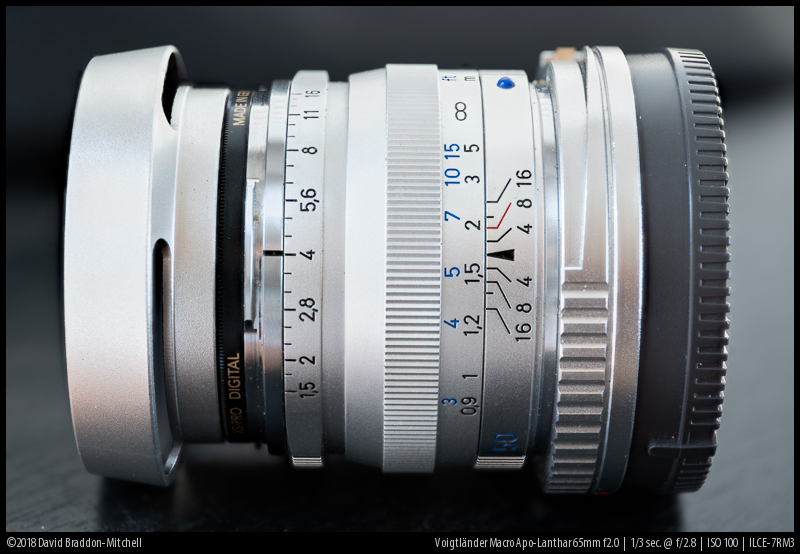
We have become used to old lens formulas being revived and sold for occasionally huge sums of money to collectors and photographers hoping to create images with a magical vintage look. All of us here have been very sceptical about this. Mostly they have been simple lenses in simple bodies with poor technical qualities being sold for more than the price of the latest and greatest glass. From one perspective the legendary C-Sonnar from Zeiss is like this. It’s a classic design dating from 1932 whose principal design goal at the time was to reduce the number of air glass surfaces because the coatings of the day were so primitive. Why do we need it now? But Zeiss bought it back in 2006 in M mount as part of the ZM series. The optical design is not much changed, but it comes with modern coatings. Many prize it for magical rendering and flattering portraiture, others think it shows that not even Zeiss is above trying to rip off nostalgic hipsters. Read on and find out who is right!
Specifications
| Diameter | 56 mm |
| Length | 45 mm |
| Filter Thread | 46 mm |
| Weight (w/o adapter) | 250 g |
| Max. Magnification (w/o close focus adapter) | 1:15 |
| Close Focusing Distance from the sensor (w/o CFA) | 0.9 m |
| Number of aperture blades | 10 |
| Elements/ Groups | 6/4 |
Image Samples
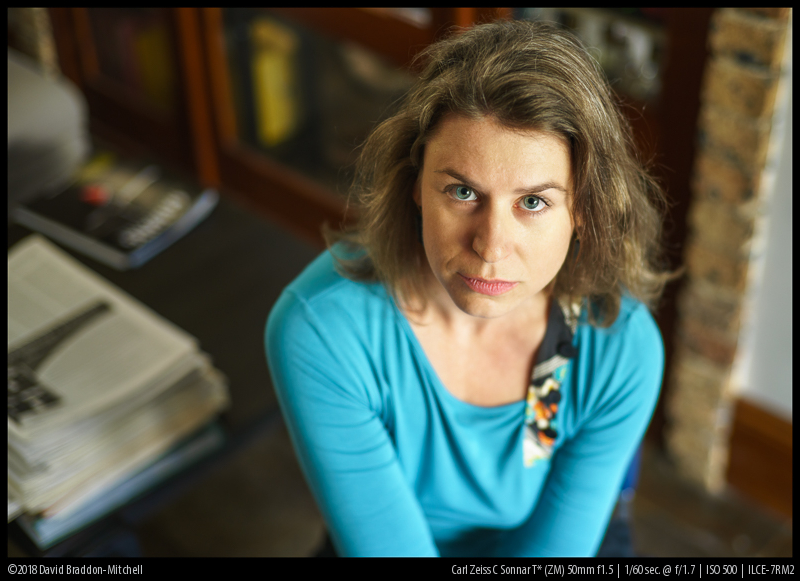
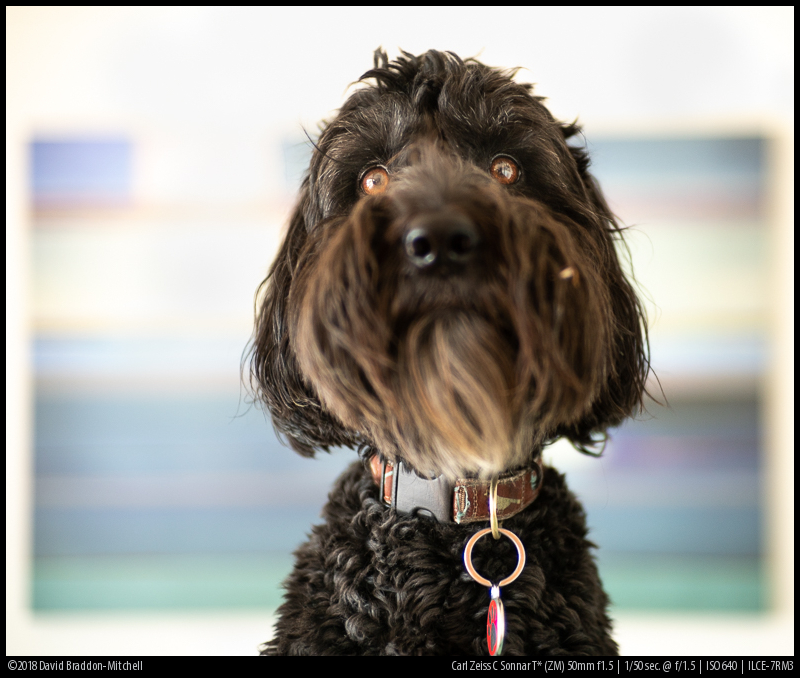
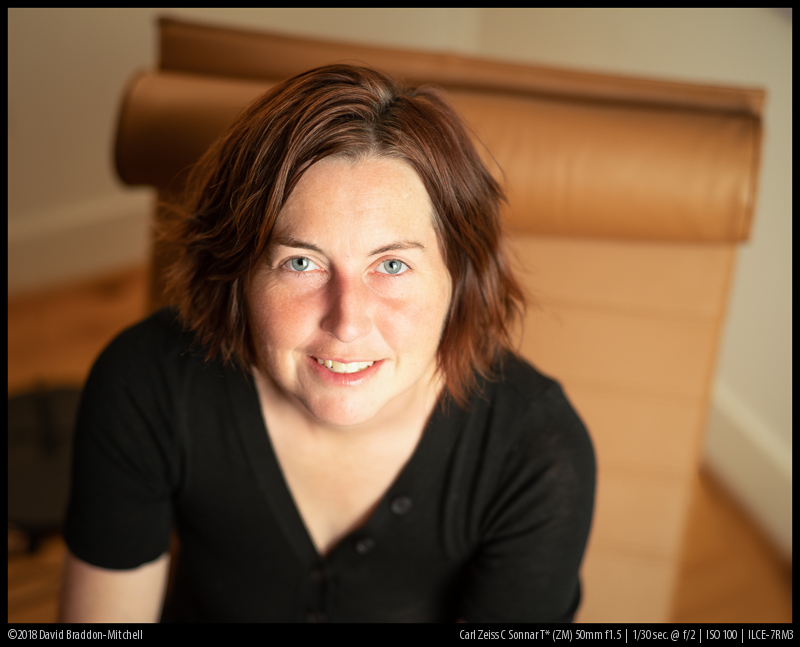
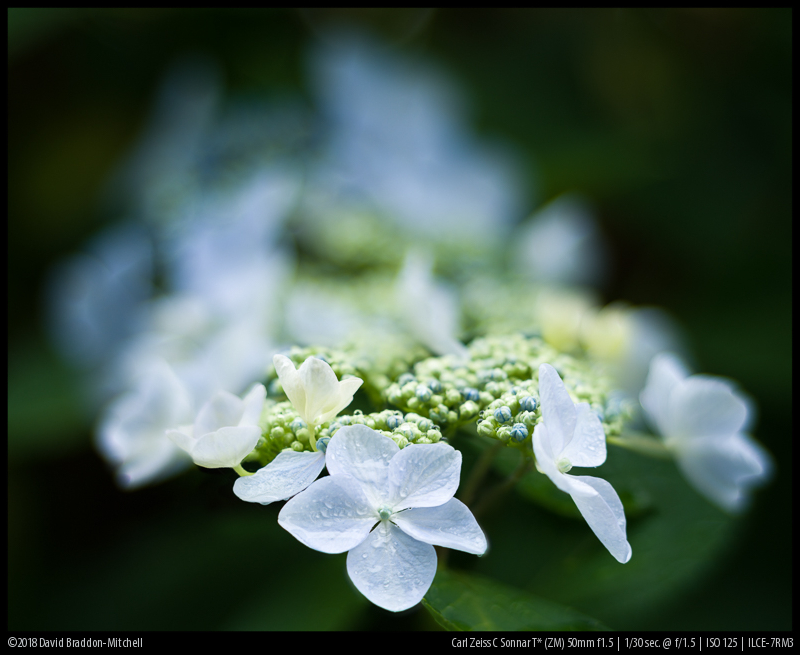
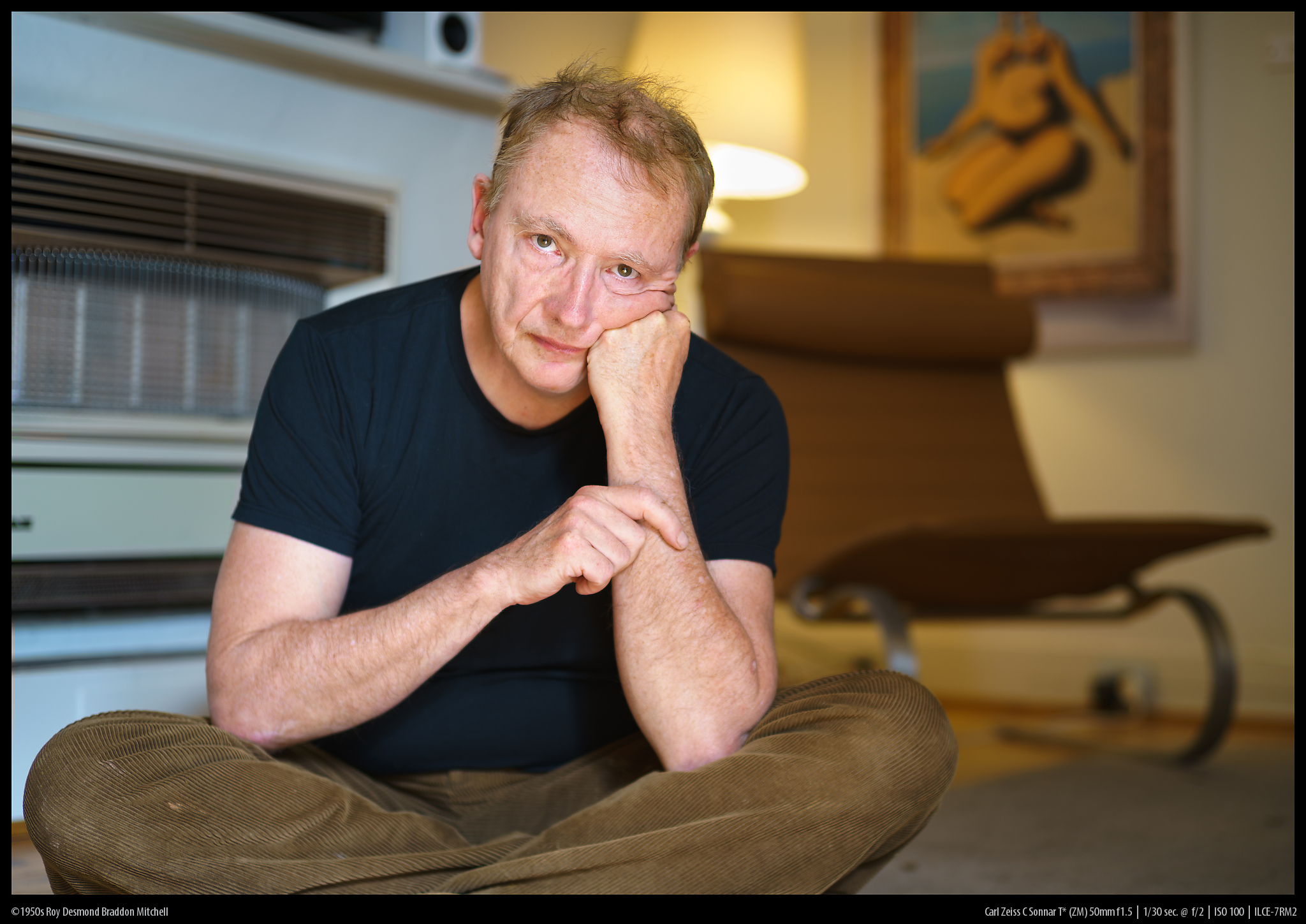
Contents
Build quality and handling
Like most ZM lenses it’s tight and precise, and as far as I know has only a little copy-to-copy variation. It has a nice luxurious mechanical finish. I have a had my copy for a couple of years, and and is no blemish to the finish or optics. I believe some earlier copies had a tendency for the front structure to come loose, but that seems to have been fixed.
Focusing Ring
It focuses from .9 metres to infinity in about 85 degrees, with a beautifully damped helicoid. The focusing ring is made of metal, and is ribbed in a way which makes it very easy to find and grip
Aperture
The aperture ring is a nice metal ring at the front of the lens, and stops down from f1.5 to f22 in 1/3 stop increments, with a very precise click. There are also easy to see 1/3 stop markings. The aperture ring is nicely ribbed.
Hood
The Zeiss hood is a very nice piece of metal which spring connects to the bayonet at the front. It is, however, absurdly expensive at over USD 100! If you have the silver model you can pick up an attractive satin screw-in vented hood that seems to match almost perfectly in both finish and aesthetics for about ten bucks on eBay.
Adapting the lens to Sony
Normally I recommend the latest version of the Hawk’s Factory helicoid adapter for M lenses. But it’s best features—adjustable infinity and the helicoid—are of limited use on this lens. The helicoid is of less use because the quality of the lens drops off very quickly when mechanically focussed at close distances (you are much better off using an achromatic diopter to get a little closer) The infinity adjust is less useful than usual because you are not likely to be using this lens for infinity purposes except in an emergency. I found a cheap satin chrome look helicoid adapter for very little on eBay. I wouldn’t use the helicoid regularly, but it’s there if I need it. But you might prefer a simple and solid M mount adapter like a Novoflex. You can get one via our affiliate link at B&H
Size and Weight
This lens is tiny for a 1.5/50. If you like the way it renders, and are prepared to take a bit of raw sharpness hit compared to modern designs, this is one of its great advantages. As far as I know it’s smaller and lighter than any fast 50 in production. So for those who love it’s distinctive look—and I’m one at least some of the time—it’s a joy to carry around and use, combining small size with precision feel. Here is a David and Goliath comparison with the Sony Zeiss FE Planar 1.4/50.
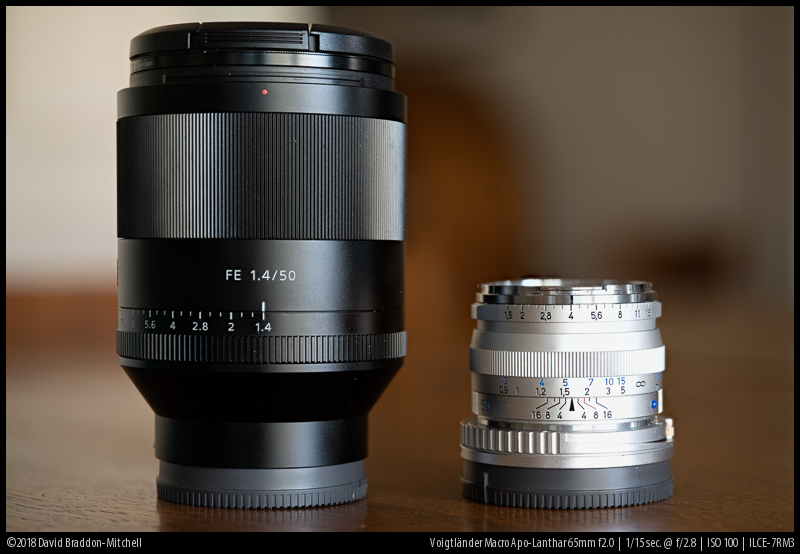
Optical performance
These results are based on use with a Sony Alpha A7rIII.
Flare Resistance
When the Zeiss Sonnar lens was originally designed, the main design goal was reducing flare by reducing the number of air-glass surfaces. The early Planar-Biotar type designs of the time were a little sharper, but suffered from very low contrast due to non image forming light. The Sonnar was much easier to use in backlight or other uncontrolled lighting.
When the Sonnar was remade, Zeiss had the opportunity to put modern coatings on the C-Sonnar, which they did. In part because these coatings meant that air glass surfaces were less critical one pair of elements that were cemented in the original now have an air gap, giving somewhat better resolution.
So is the flare performance of this classic, anti-flare lens designed equipped with modern coatings outstanding as you might expect?
Not really. It’s very good; vastly better than an original Sonnar if you can find one in working order, or any of the Russian Sonnar copies. But modern computer design which traces non-image forming light is just as crucial as coatings, so there are more complex modern lenses that perform better against the light.
For all that the performance is plenty good enough not to be a strike against buying one of these for its rendering.
At wide apertures the sun in the frame lowers overall contrast quite a bit, but there are relatively few artefacts. The artefacts that there are tend to be a blob of discolouration off axis.
Case 1: sun in midfield
And here is an aperture series taken with the sun centred:
As with many lenses, it is possible to provoke a contrast loss with the sun just outside the frame. This can be significantly mitigated by shading with a hand.
Here is an example of the contrast loss wide open with the sun just outside the frame, compared with the same scene using a hand to block the sun.
Sunstars
Despite having ten straight aperture blades, the C-Sonnar does not produce especially defined sunstars. At f5.6 they are still very amorphous:
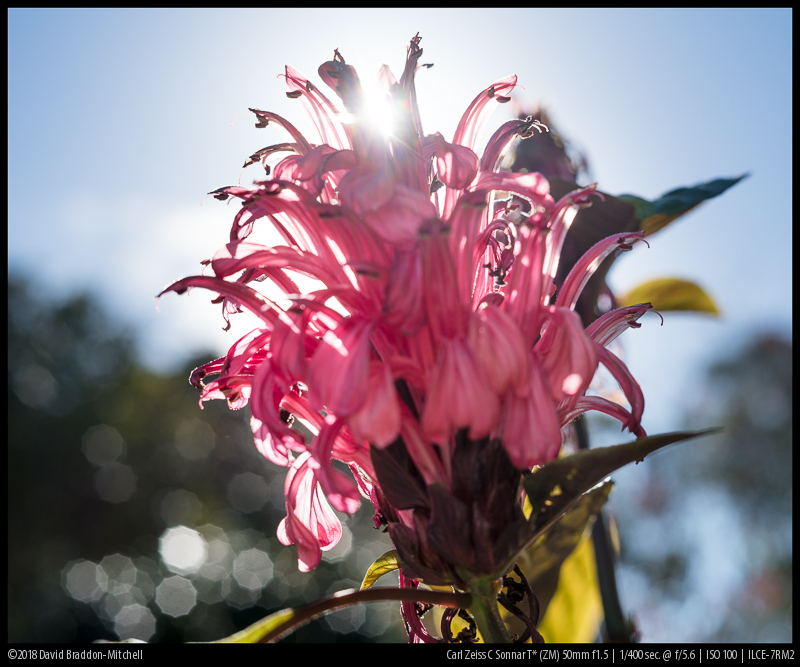
And it is not until f8 and 11 that the ten rays become even moderately defined (you can however see the slightly Ninja star shaped bokeh balls in the above image)
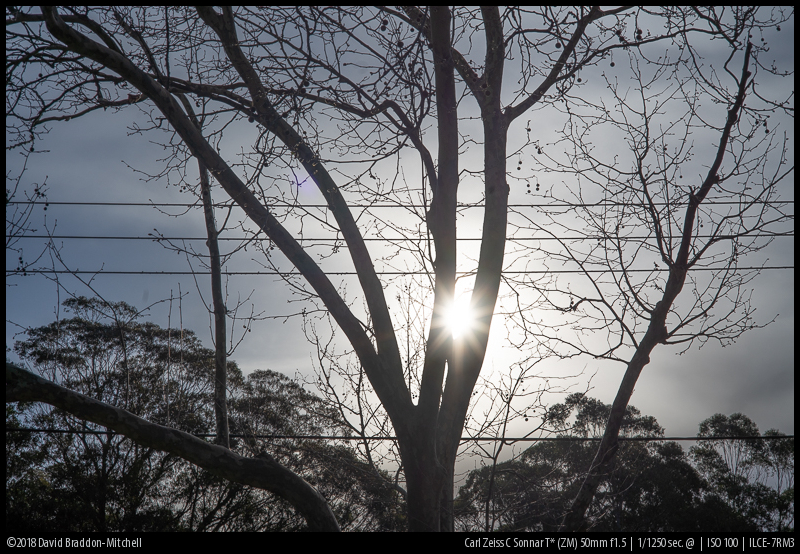
Bokeh
Case 1: subject 1.8m, Background 5m to infinity, soft light.
I’ll start with a fairly distant and busy background at two meters distance: a half body distance for a lot of portraiture. The background is at varied distances. The balustrade in the lower part of the picture is about 40cm behind the subject. The closest foliage—lower in the picture—is a bout five meters away, and generally the elements get further away as you go up in the frame until you come to the line of hills against the sky, which are at infinity.
Case 2: subject 1m, background 1m behind subject, backlit
Here is a backlit subject photographed fairly close (head and shoulders or a bit more for a human subject) with a busy, backlit background.
Perhaps the most notable thing is the difference between f1.5 and f2. At f1.5 the lens has a degree of soap bubble effect (though not as much as some earlier similar designs such as the Jupiter) which you might or might not enjoy. But at f2 the bokeh balls are quite evenly illuminated.
F2 is the aperture I use most often, given decent separation and a smooth, classic look. F 1.5 is for a wilder vintage look. Here’s a direct comparison at about half life size, F2 on the left.
Here is a comparison between the C-Sonnar and the (heavy and expensive) Sony Zeiss FE Planar at full body distance, with many bokeh elements less than a metre behind the subject.
Many of the bokeh elements just behind the subject (such as the leafless vines growing on the shed) the Sony Zeiss Planar is somewhat smoother than the C-Sonnar. It’s a good deal sharper in the subject plane too. At these distances, I don’t see a reason to use the C-Sonnar if have a modern lens available.
Chromatic Aberrations
Axial Chromatic Aberrations
The Axial CA around the plane of focus is somewhat hidden at widest apertures because the monochromatic spherical aberration blurs it somewhat. Perhaps this contributes to the distinctive look of the lens. You an see the effects of spherochromatism in the well out of focus areas, especially in the foreground, where there is a mix of green and magenta colouration. As you stop down both spherochromatism and CA just behind and in front of the focus plane becomes somewhat tamed. Because of this interaction, the typical green behind the plane and magenta in front of the plane aberration is clearest at f2.8 (though no doubt it is there, albeit masked, as wider apertures).
Lateral CA is very low.
Vignetting
I measure just over two stops in the extreme corner wide open, just over half a stop by f4.
Distortion
I can’t see any distortion in frame filling images. Zeiss specifies a peak of .5% barrel distortion in the mid frame.
Infinity Resolution
The resolution section is here a little bit different from how we have usually done things at PhillipReeve. Rather than sections from a single diagonal image I have moved the camera and taken separate aperture sequences in each position (corner, rule of thirds intersection, centre). This is slightly more work, but means that because it is the same infinity subject in the different positions, it is easier to compare.
Also, for this test I have refocussed at each position: thus this test does not show the effects of field curvature. With a landscape type of lens this would be a mistake, because edge to edge sharpness in one shot is a common goal. But with a lens like this, where usually you will be focussed on a single subject, the optimum sharpness at each position is perhaps more important.
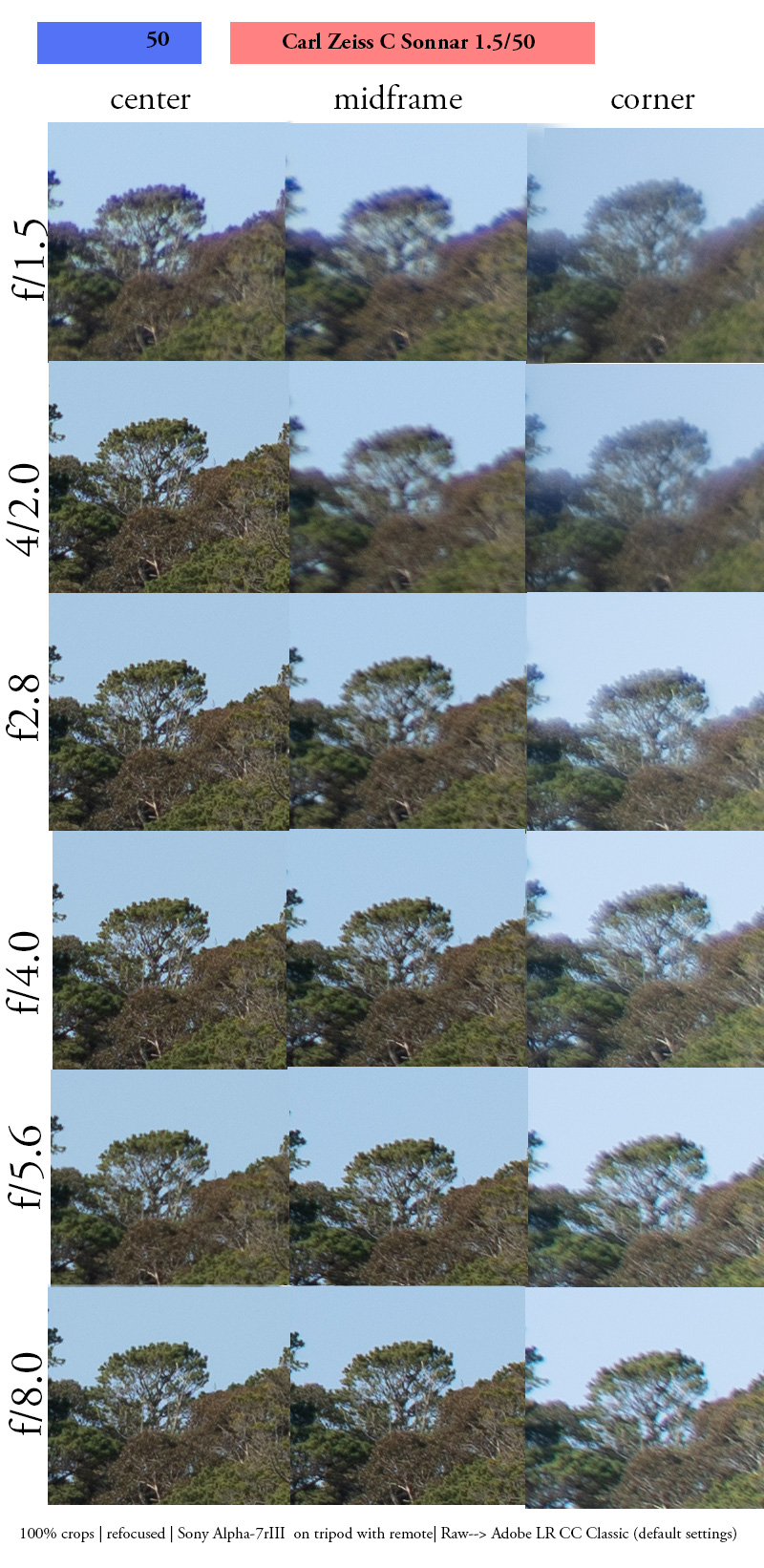
f/1.5: Acceptable in the centre, quite blurry in the midfield and corner. The lens appears to be showing some midfield dip.
f/2: Good in the centre, slight improvement in the corner and to a lesser extent in the midfield.
f/2.8: Very good in the centre, and surprisingly decent in the corners and midfield. I was surprised by this.
f/4: Good across the field.
f/5.6: No real improvement, if anything the corner has god worse. I have double checked this behaviour.
f/8: No further improvement, maybe a touch softer.
This infinity performance gives a good idea of the relative performance across the field at closer focussing distances. The absolute performance diminishes somewhat near the MFD.
This was on the whole better performance than I expected from this lens at infinity. It looks like, although it’s not the landscape lens of choice, if you were using it for nostalgic portraits and saw a landscape image you liked you could get OK results at f5.6.
Although f4 looks as good in my comparison,f5.6 or 8 would likely be needed to compensate for field curvature which is not shown here.
The next test is is a comparison of wide open performance with a large, modern f 1.4 design. Only the deluded mystic thinks that a lens of this size and age is likely to perform technically close to a modern design, especially at wide apertures. But what is the difference? Here’s a comparison with the Sony Zeiss 1.4/50 Planar FE. I choose this lens only because I have it, and it is a superb modern design. I expect the Sigma Art and the new Canon R would perform in somewhat similar ways, as probably will the new Nikon mirrorless lens when it comes out. These modern designs are while very large much better performers at wide apertures than any of the classic Planar type (Double Gauss) designs, let alone a classic Sonnar.
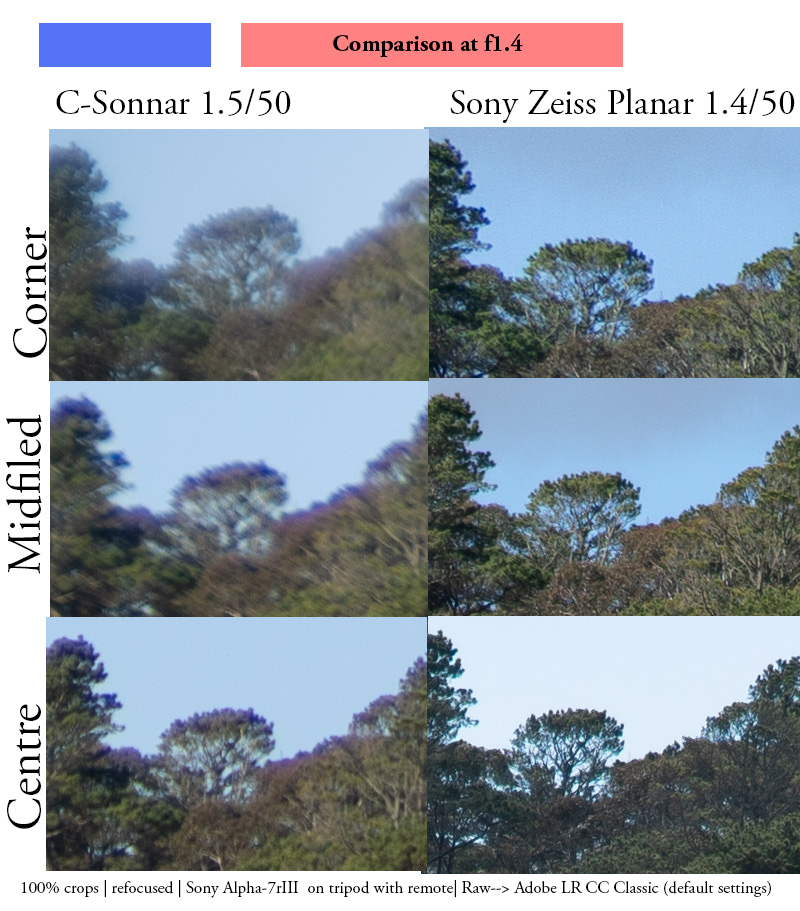
Curvature of Field
The field curvature is at its most extreme wide open, and is largely gone by f8. I will show you the wide open difference between the corner focussed in the corner and the corner focussed at the centre:
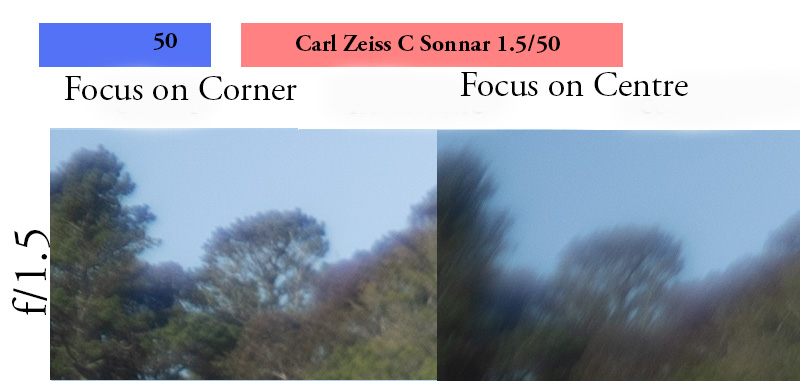
As you can see the difference is huge wide open; though it rapidly diminishes and is very mild at f5.6 and largely gone by f8. Rather than absolute performance, this is the main limitation for landscape use.
Close Focus Resolution
Close focus performance is not that wonderful on these older designs. The lens has an MFD of 0.9 metres, which is a little restrictive, but performance would suffer if it focussed closer (on a helicoid or with extension tubes.
However there is a solution: by using an achromatic diopter we can focus at the same actual distance (0.9 metres) as the MFD while the lens itself is set closer to infinity. The difference is quite dramatic.
The next test is a comparison of the bare lens focussed at 0.9 metres, with the lens fitted with an SLR magic +1.3 diopter achromat, which allows focus at approximately the same subject distance. Any brand of achromat will give OK performance, but it needs to be about this strength to allow focus around a metre, and +1.3 diopter units are not common.
Here is the comparison wide open at f1.5:
LS bare lens RS with SLR magic +1.3 diopter achromat.
And here is the comparison at f2:
LS bare lens RS with SLR magic +1.3 diopter achromat.
I strongly recommend using an achromatic diopter with this lens if you are, for example, taking portraits at about 1 – 1.5 metres. You can also, by using even stronger achromats, focus closer than the MFD with good results.
Focus Shift
Focus shift is the effect that, when focussed at one aperture, some lenses will have inaccurate focus if the image is taken at a different aperture without refocussing.
This lens has famously bad focus shift. Just type C-Sonnar Focus shift Calibration into Google! The shift is so bad that now Zeiss will calibrate it either for wide open use or slightly stopped down use on a rangefinder. Or you can get it calibrated for f2 use, causing errors (on a rangefinder) used either wide open, or at f2.8 or further down.
I have completely ignored all of this.
Why? Firstly the calibration issues only apply to a true rangefinder body like a Leica or Zeiss Ikon. They have no effect whatsoever on a Sony. Secondly, with Sony we typically focus through the lens stopped down to taking aperture, or at least a few stops down. In this case we completely avoid any effects from focus shift at all.
The only thing you need to know is that, more than usually, you should not focus wide open and then stop down. This will produce really poor results. I recommend focussing at taking aperture until f4, and for shots taken at smaller apertures focussing at f4 and stopping down if you have the time.
Alternatives
Zeiss Opton Sonnar T 1.5/50 This is one of the most famous instances of the Sonnar design, and is the model for the current lens. A good copy is almost as expensive as the ZM version, and has no merits over it in my view, except collectability and history.
Jupiter 3 1.5/50 This was reviewed by Bastian here. It is the Russian copy of the Sonnar. If you get a decent copy it’s very much like the original Sonnar, but much cheaper. It makes a lot of sense for someone who wants to experiment with the Sonnar look for not a lot of mooney, though the ZM version is a bit sharper and contrastier while preserving the overall look.
Lomography-Zenit New Jupiter 3+ This is a reboot of the Jupiter 3 sold by Lomography and made in Russia by Zenit. None of us has ever used it. It is supposed to have modern coatings and some mechanical improvements, but it’s not clear whether this is so, and it’s not cheap. Unless you can find better information the ZM is a safer bet.
Zeiss Loxia Planar T* 2/50: This is the obvious alternative. It’s not much larger, it’s a similar price, it’s fully native and it’s shaper. For landscape use it’s a no brainer: nice handling, small, and excellent optical qualities (though stopped down for landscape it’s only a little better some much cheaper classic double gauss lenses). On the other hand it’s not that much better than the C Sonnar at f2; and the bokeh of the C Sonnar is to my taste much nicer at f2. In general I prefer the C Sonnar for pictures of people, though if I had to own only one 50mm lens the Loxia would be on the shortlist and the C Sonnar would not.
Sony FE 1.8/50: This was reviewed by Phillip here. It’s quite sharp stopped down, less so wide open, and has slightly odd bokeh wide open. It is also slow to focus and has a poorer build quality than many Sony lenses. But it is a decent, lens, has AF and is reasonably priced.
Sony Zeiss FE Planar T* 1.4/50: A lens I am very keen on at the moment; wonderfully crisp with quite smooth bokeh even at f1.4. Very high performance for any application. However it’s expensive, and huge. Did I mention it’s huge? The downside of modern high performance primes is that are very large (and the trend with the new mirrorless designs from Canon and Nikon appears to be for the to become larger still). Did I mention it’s huge? But if you want an expensive and heavy though wonderful 1.4/50 you can buy if from our affiliate link at B&H
Sigma Art 50mm f1.4: Not quite as sharp as the Sony Zeiss above, and I don’t like the bokeh as much: but still excellent in these regards – a great improvement on classic 50m f1.4 lenses. A little cheaper than the Sony Zeiss Planar too. But even huger. Did I say the SZ was huge? It is. This is huger.
Sony Zeiss FE Sonnar T* 1.8/55 : This is the lens hailed as the “mini Otus” when it came out. Fashion soon turned against it and there were complaints about its CA, onion rings and flat “sterile” look. The reality is it’s neither an Otus nor a disappointment. Yes it has more LoCA than we’d like, but it is much sharper than any previous 1.8/50 class lens that was available. Perfectly usable wide open, and with quite smooth bokeh. It does have onion rings to a degree, the LoCA is a nuisance and the global contrast is not high. But all of those things can be mitigated in post, and it remains one of the most useful normal lenses you can get for AF use. There really isn’t yet anything as good on any mount if you want a small, light, high quality AF moderately fast normal. Of course it doesn’t have the distinctive look of the C-Sonnar.
Any Vintage Double Gauss Lens We have reviewed a number of vintage double Gauss lenses from Minolta, Canon and Olympus amongst others here. Many of these will be cheaper than the C-Sonnar, and most—but not all—a little sharper stopped down. However these vintage designs typically don’t have wonderful bokeh at near maximum aperture, and if the classic Sonnar look appeals to you, then you won’t regard them as real alternatives. Of course if you aren’t a fan of the classic Sonnar look, one of the these double Gauss lenses will save you a lot of money.
Other Lenses These are the lenses I have direct access to and which I consider rivals, or which are such direct rivals it was worth commenting for you to find more information. No doubt there are other lenses I could use to compare with this lens, but I don’t have copies of them, so when you write in the comments “please compare this with lens X” the answer is “Sorry, No”.
Conclusion
pros
|
average
|
cons
|
I rather like this lens, but I’m not going to recommend it to anyone as their first or only 50mm lens. Its strength is producing a distinctive look for portraiture. It makes skin look flattering, and the look of the bokeh has a kind of classic glamour (both somewhat structured, but with an overall glow) that you may like, and which evokes much of the history of photography. It does this while performing better than the vintage lenses on which is is based, or any other reboots that we are aware of. Some people like it for general pictorial work as well. I periodically consider selling my copy, but it’s charms stay my hand at the last minute and it ends up staying in my lens cabinet, and indeed on my camera from time to time.
If you are looking for a crisp, contrasty lens for landscape or architecture, look elsewhere. But there will always be a market for something with a distinctive character when that character both has considerably appeal of its own and has historical resonance at the same time.
If the look of the classic Sonnar appeals to you, you should buy this lens. It’s has all of the virtues and far fewer of the faults of the vintage Sonnars and reboots. It is a true Sonnar design, and has that distinctive look, unlike later Zeiss and Sony Zeiss lenses branded “Sonnar” which (excellent lenses though many are) do not have the characteristic look of a true Sonnar. This Sonnar has as much improvement in resolution and contrast as you can get without changing the character of the original, and If that’s what you want, look no further.
The Carl Zeiss C-Sonnar T*1.5/50 can be purchased via our affiliate links at Amazon.com or else B&H Photo Video for about $US1200. You can get it new on eBay.com here, or you can get it used on eBay.com here. Used prices vary a lot; you often see people trying to sell them for more than the new price. If you are patient you should be able to save quite a lot buying used.
If this review was helpful to you, please consider using one of my affiliate links or sharing the review with others. Thanks ?
Some more image samples
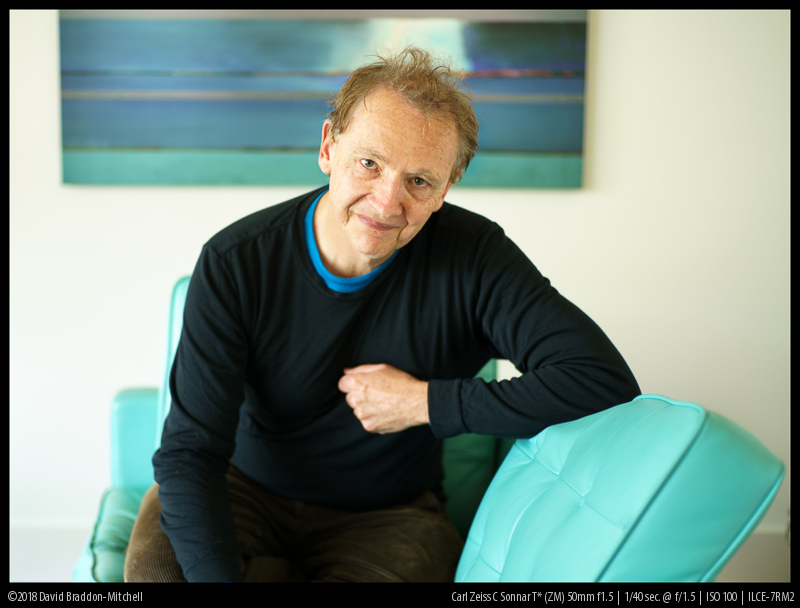
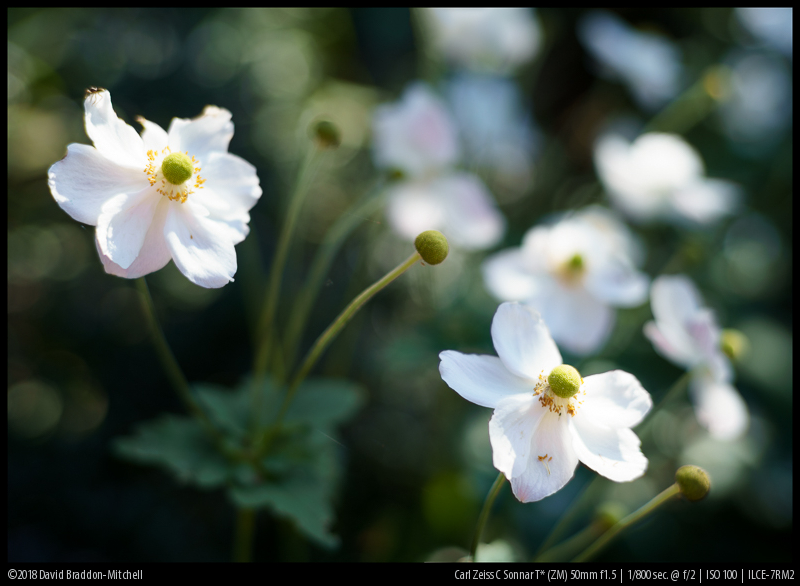
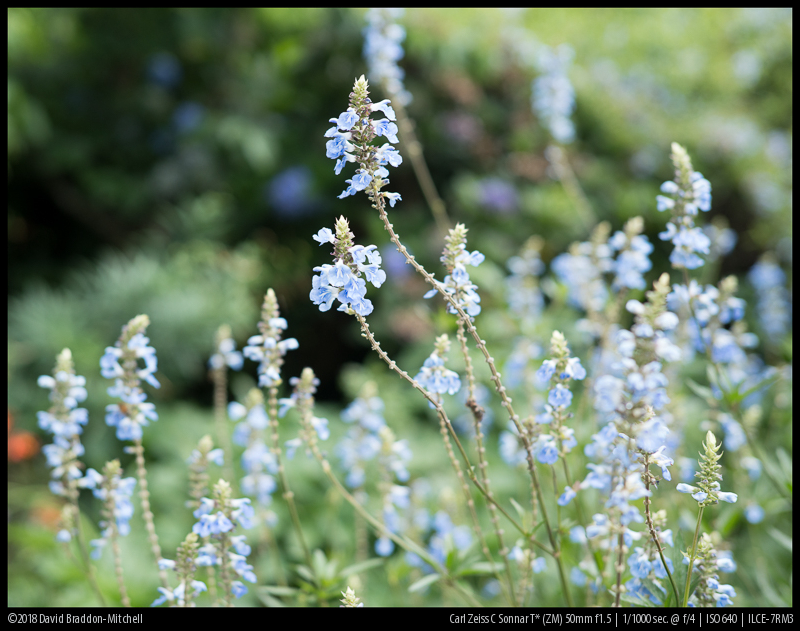
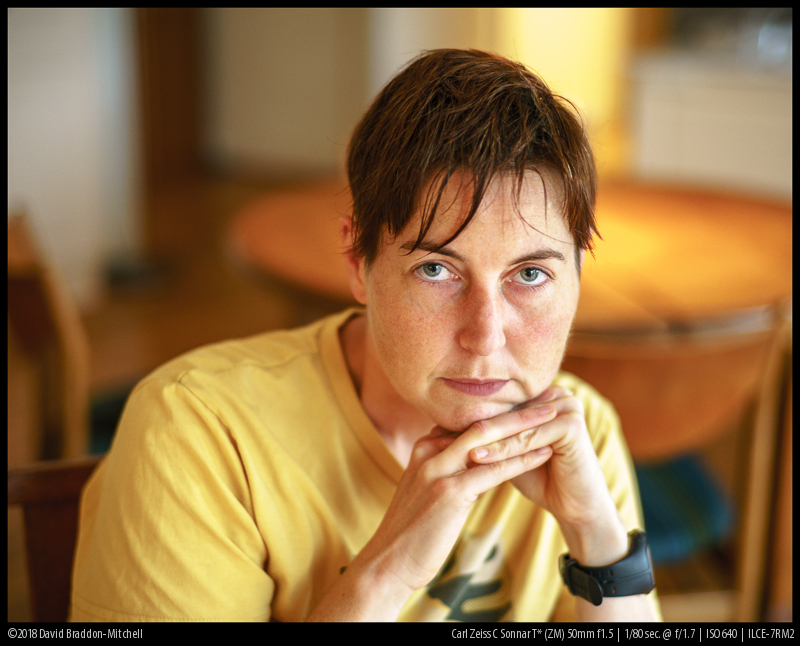
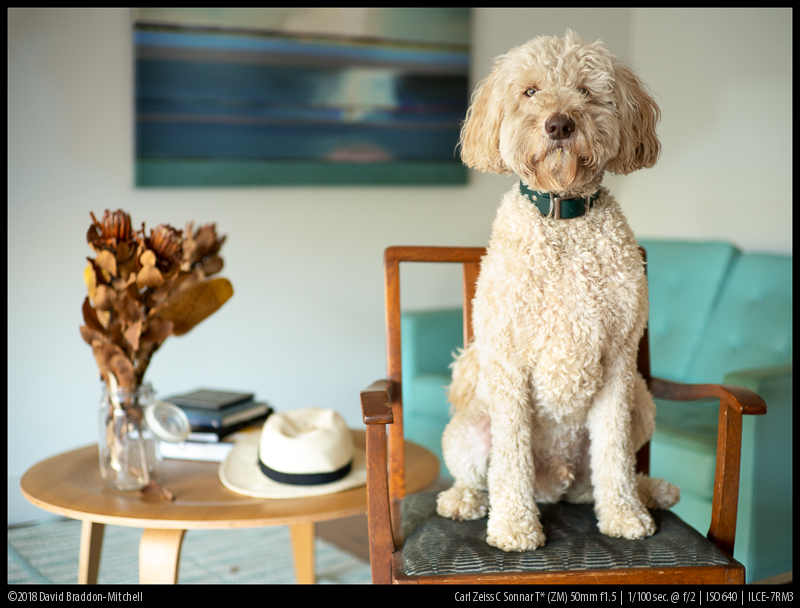
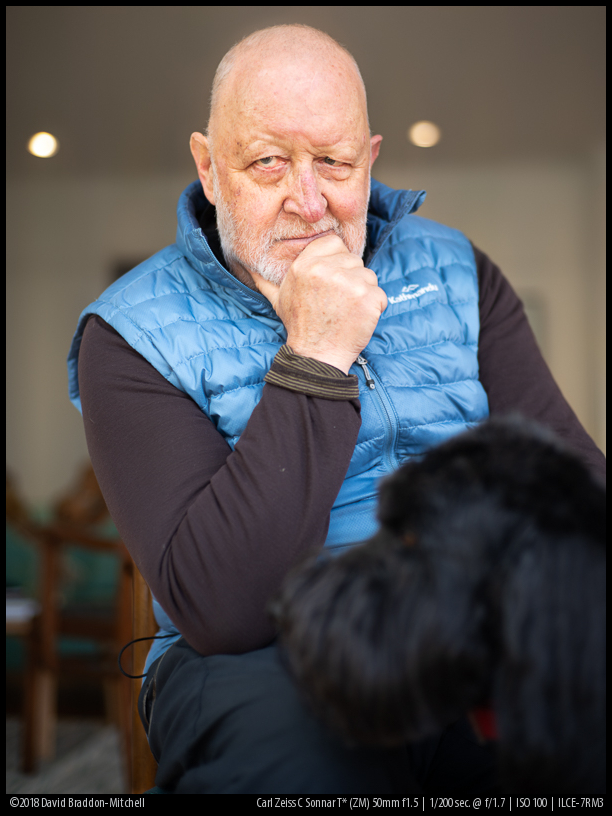
This site contains affiliate links. If you make a purchase using any of the links marked as affiliate links, I may receive a small commission at no additional cost to you. This helps support the creation of future content.
David Braddon-Mitchell
Latest posts by David Braddon-Mitchell (see all)
- Laowa FFii 90mm F2.8 CA-Dreamer Macro 2x: getting close! - August 21, 2022
- FLM Ballheads: a rediscovery - February 4, 2021
- Laowa 14mm f4 Detailed Review - December 31, 2020
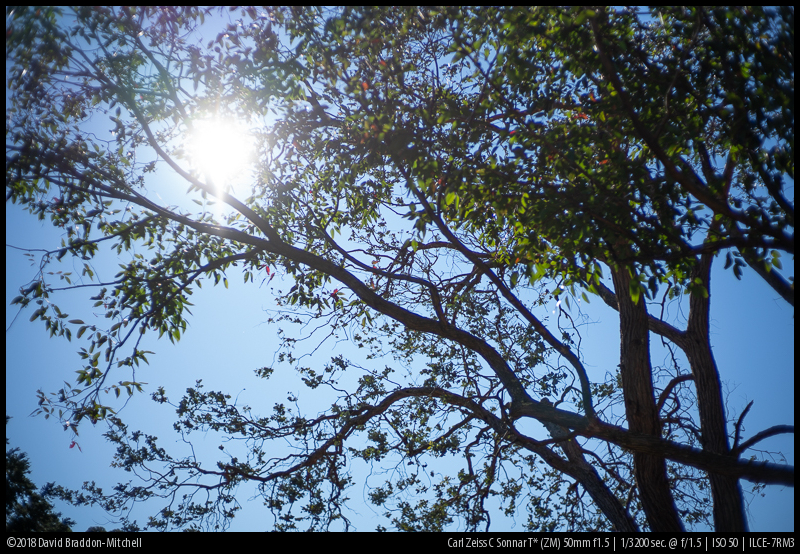
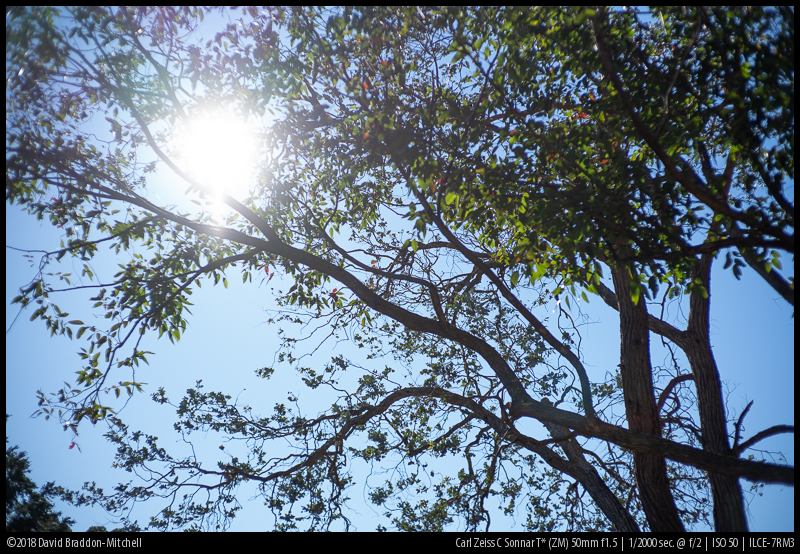
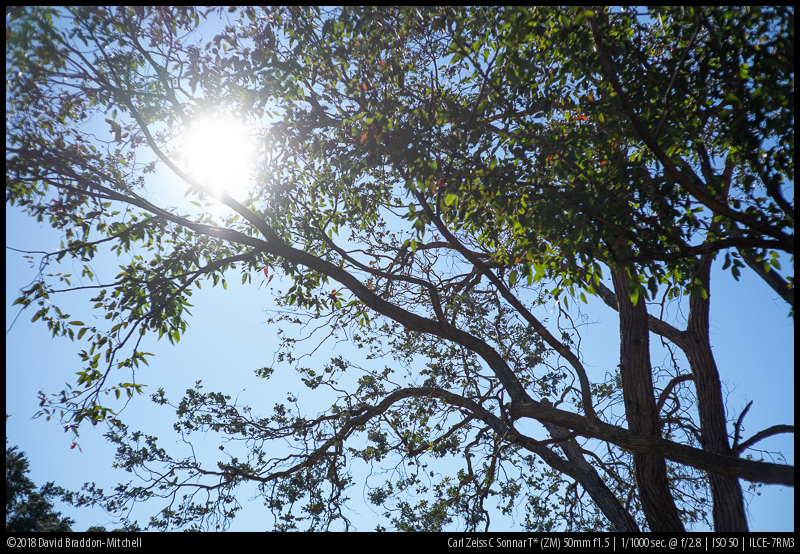
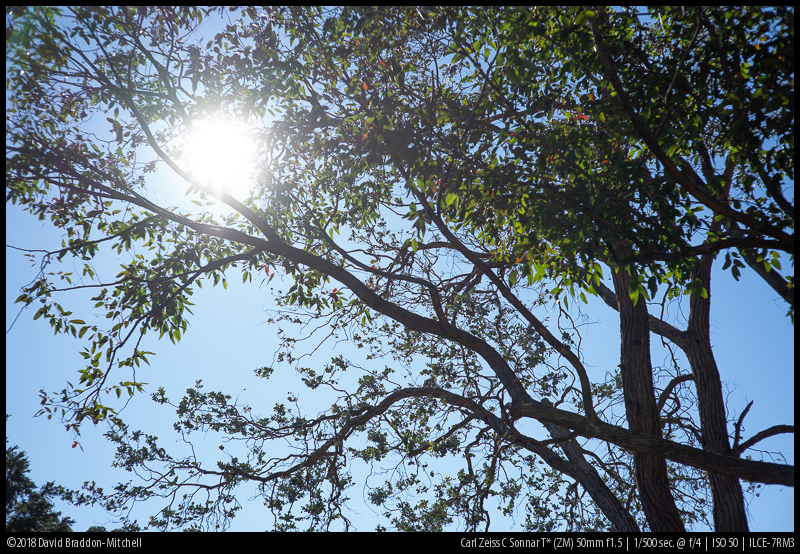
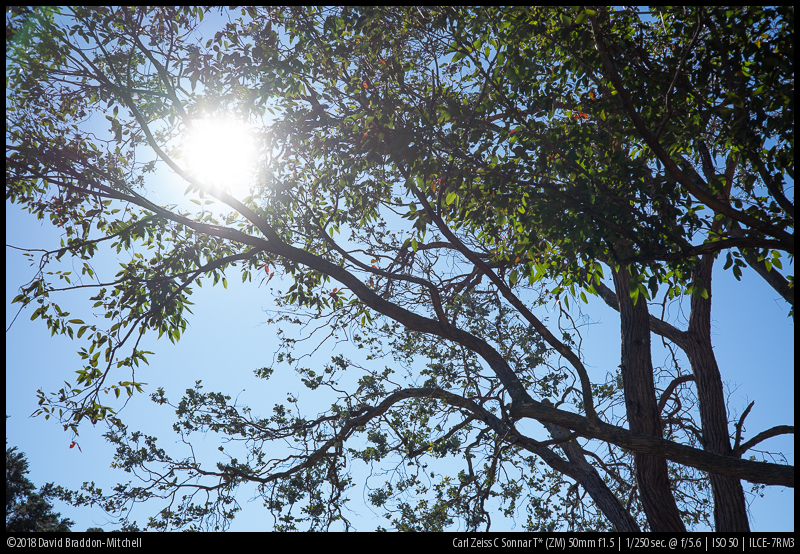
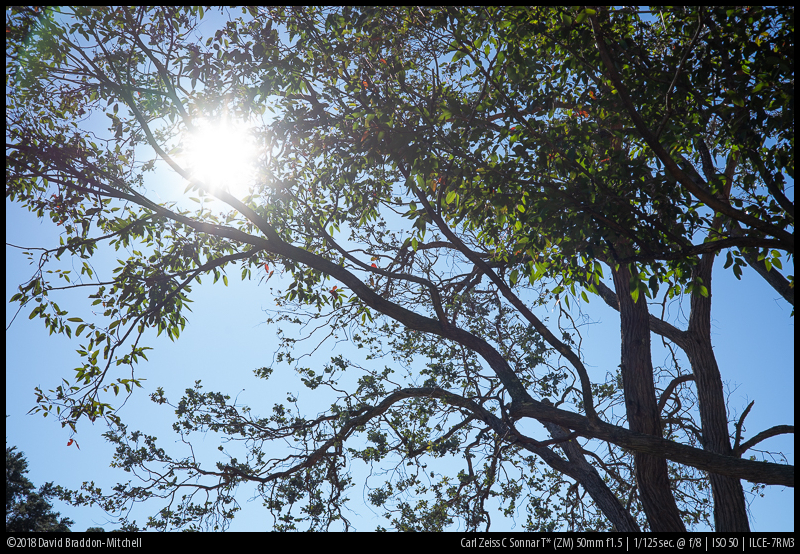
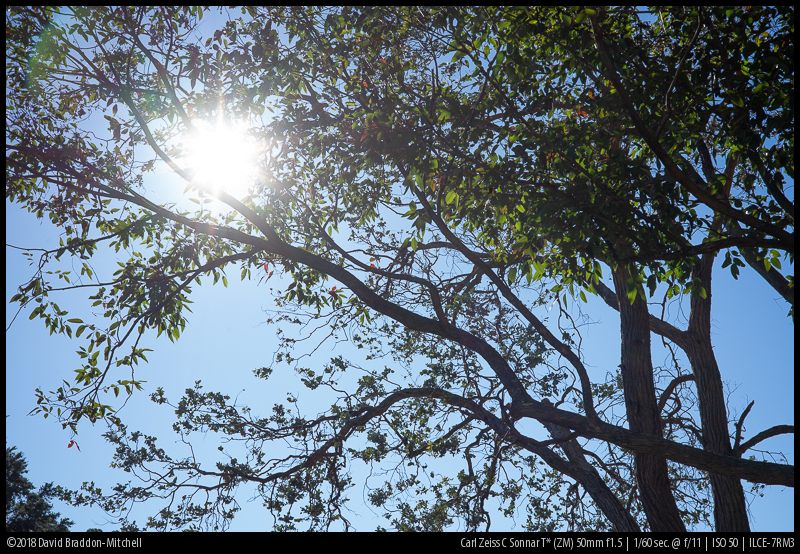
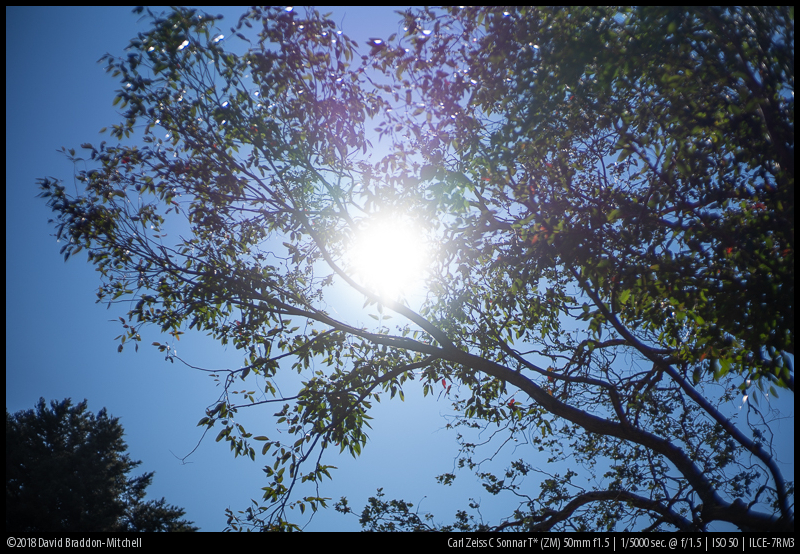

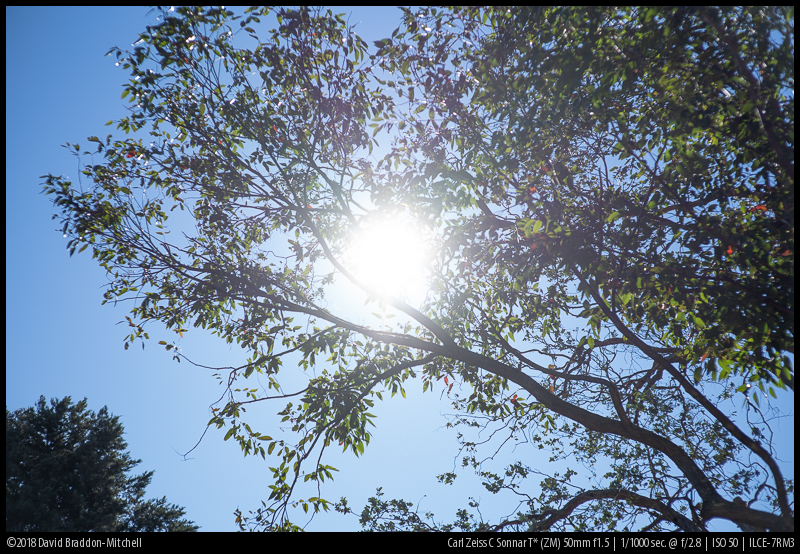
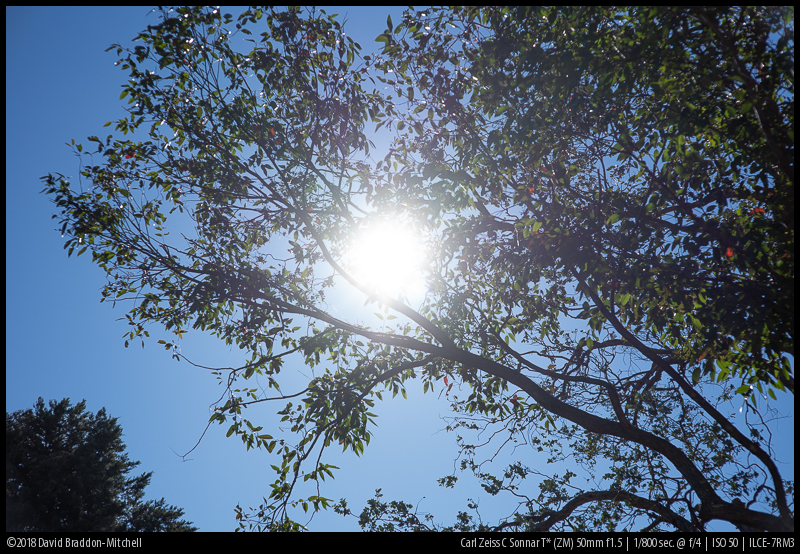
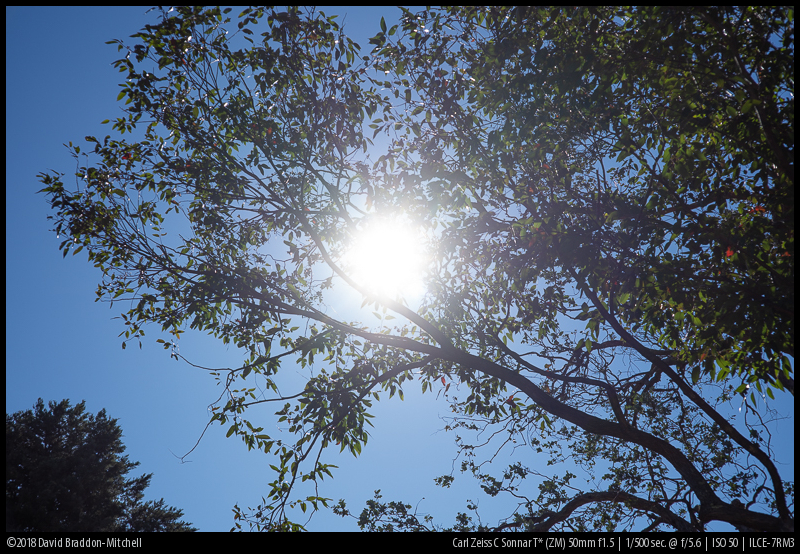
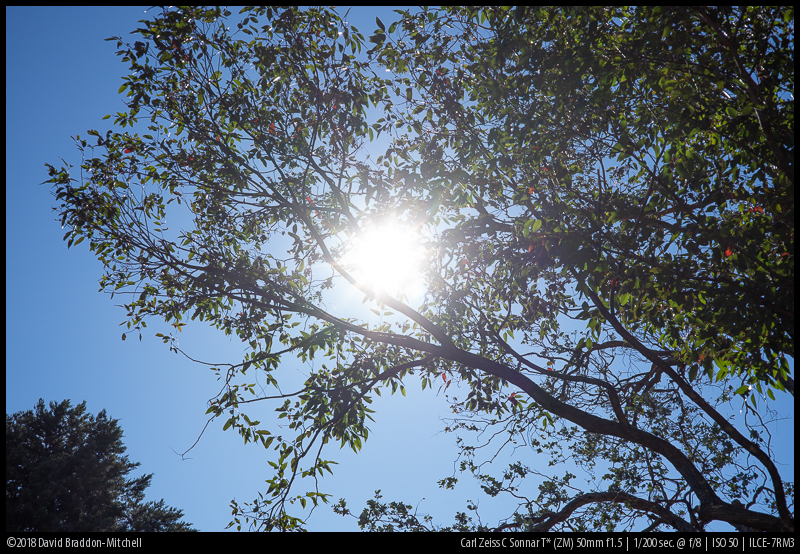
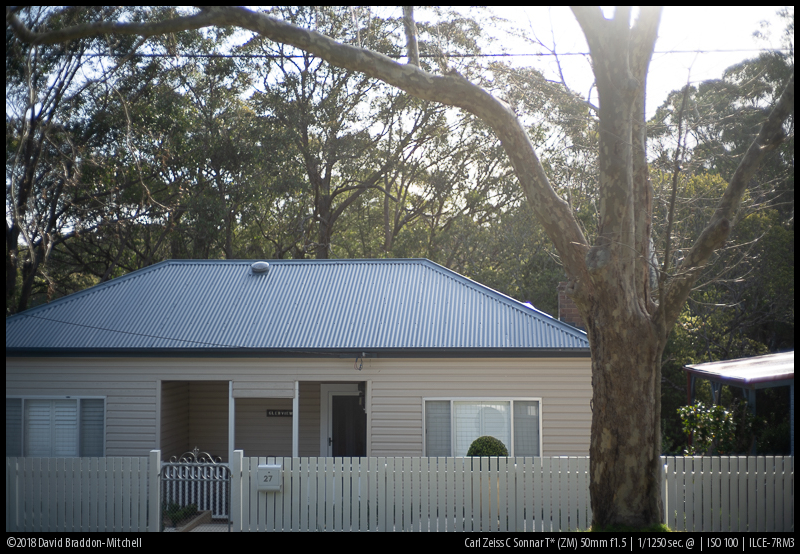
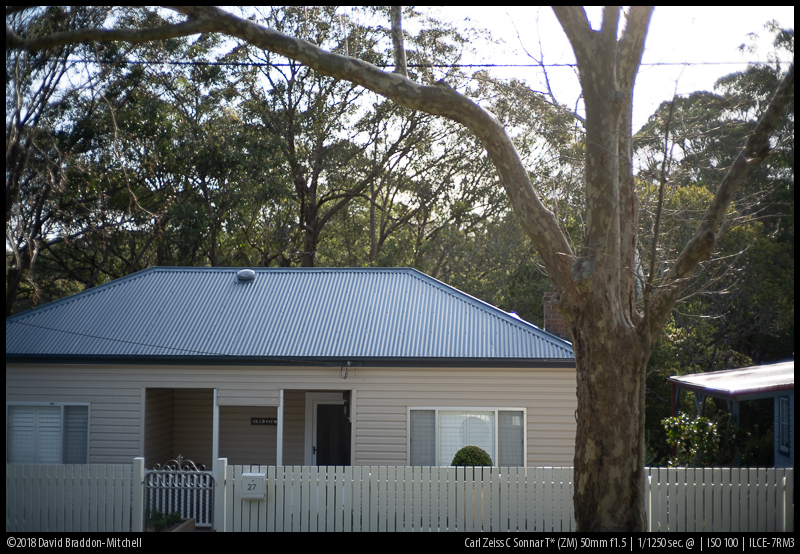
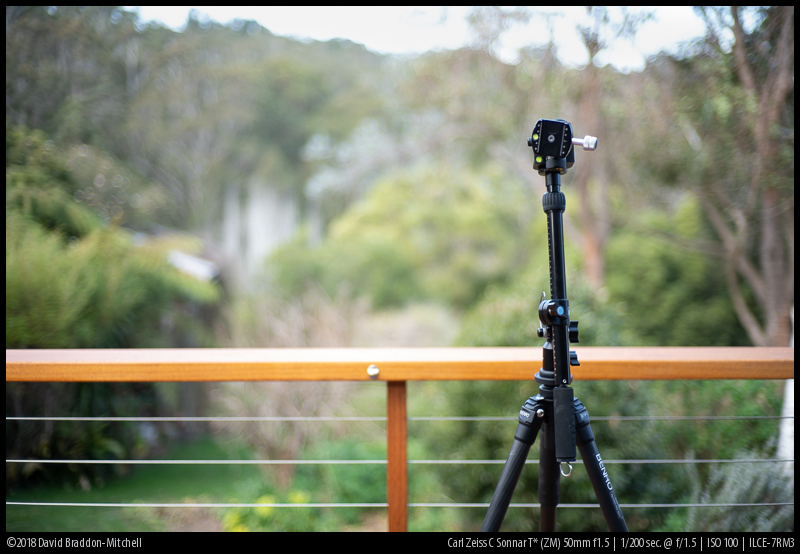
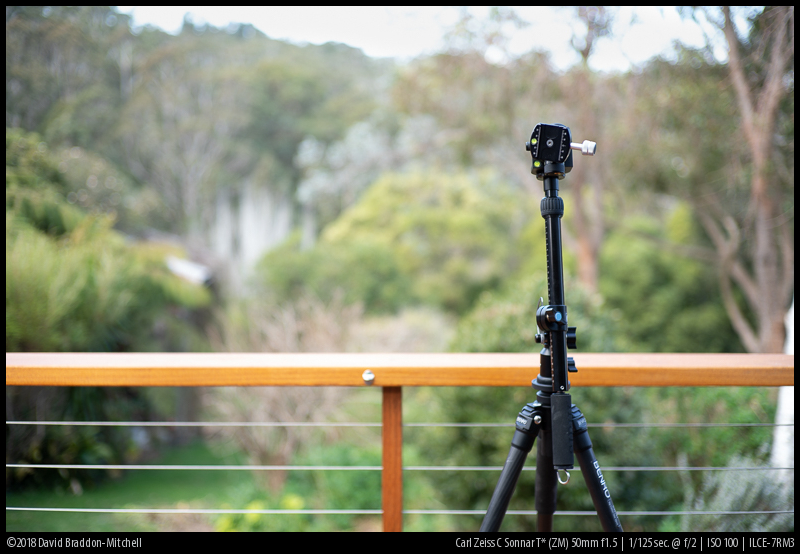
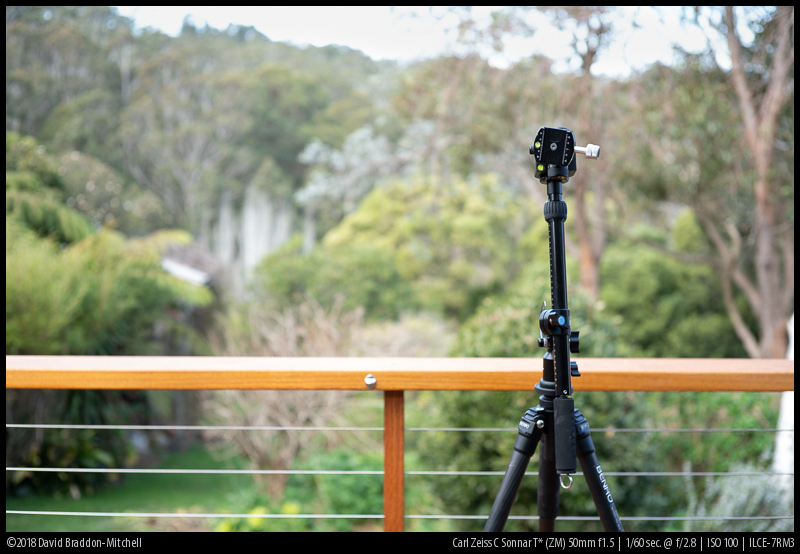
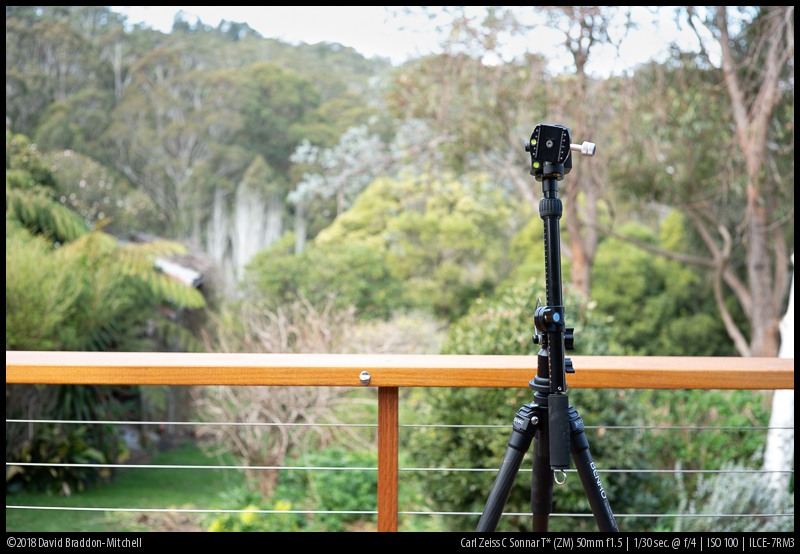
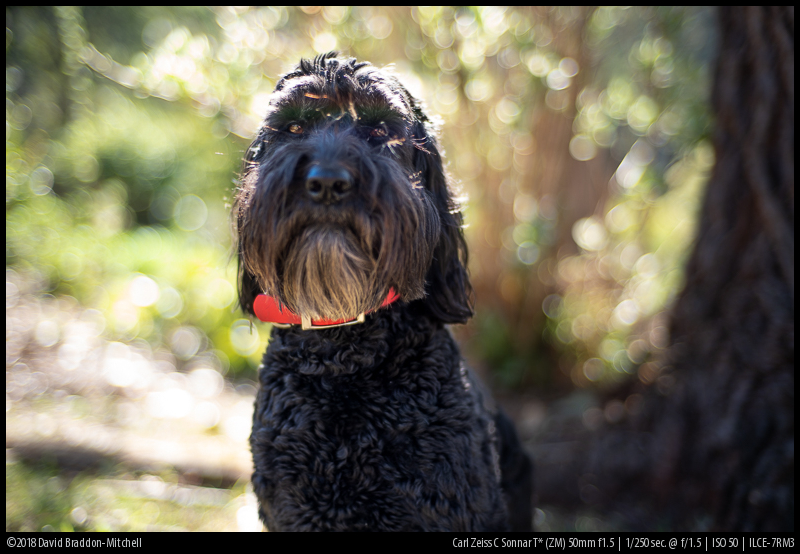
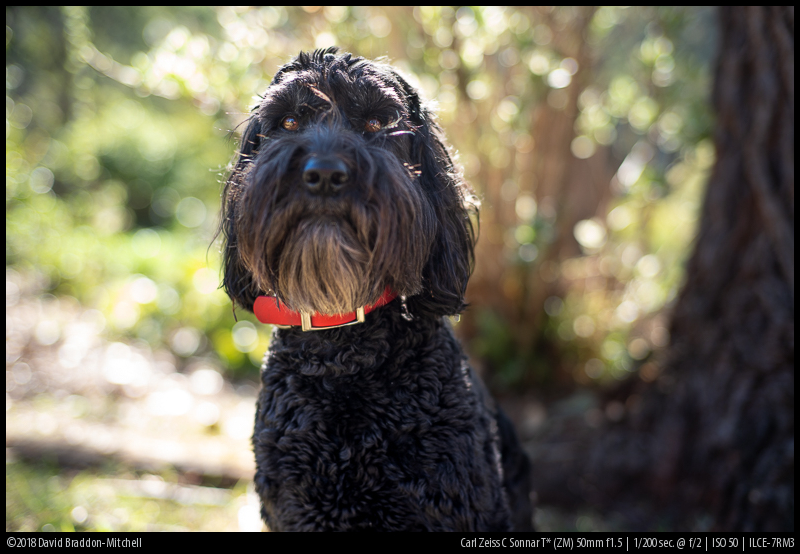
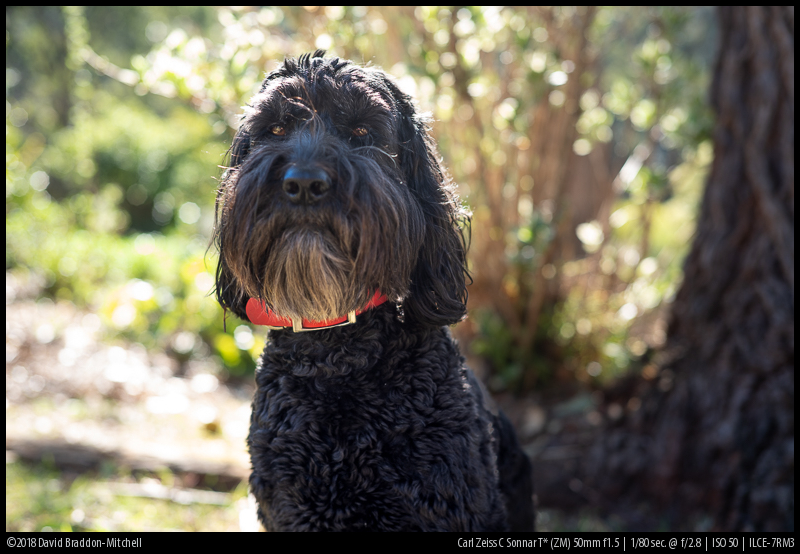
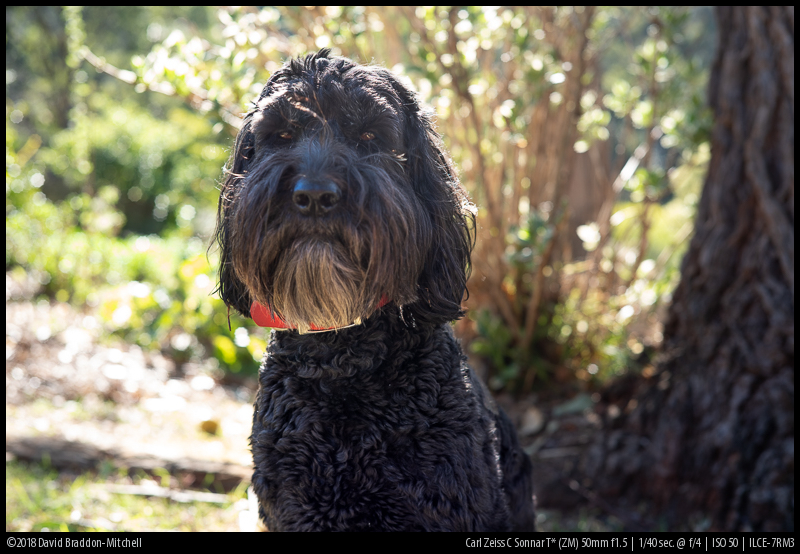
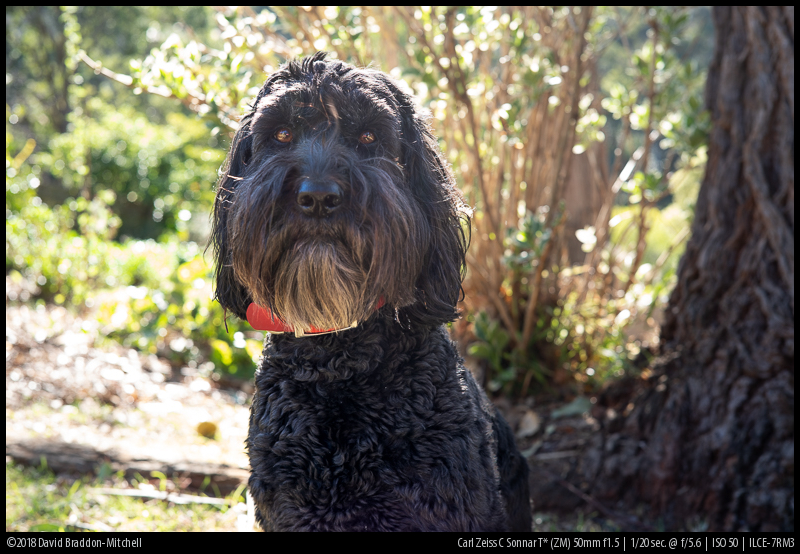
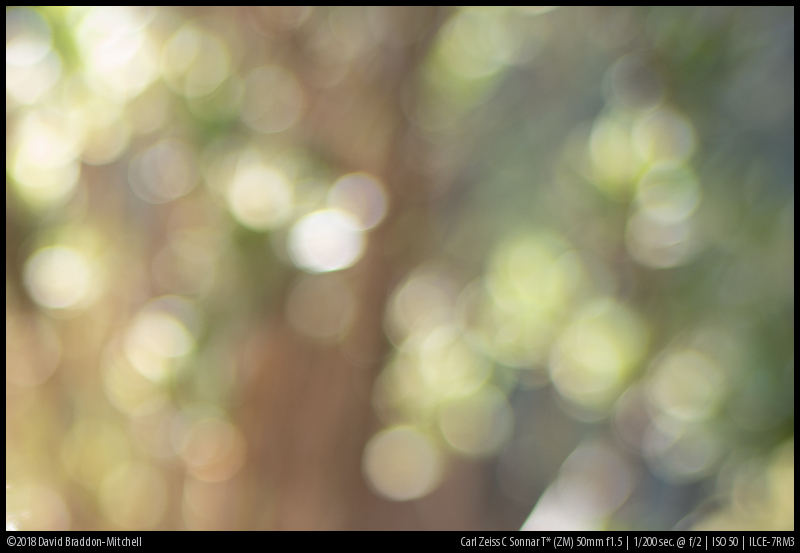
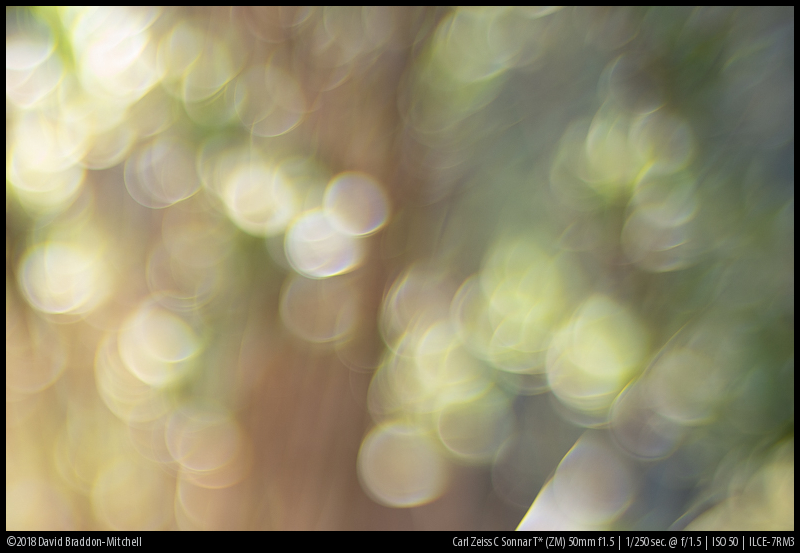
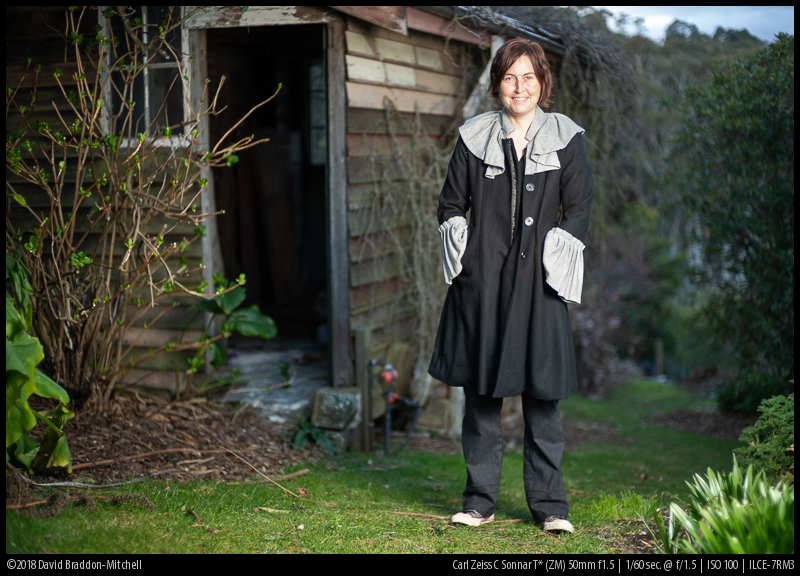
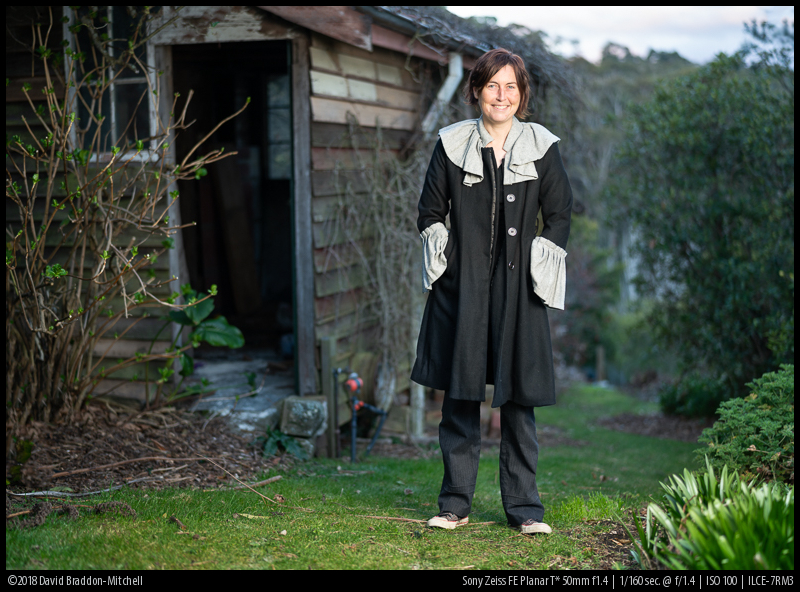
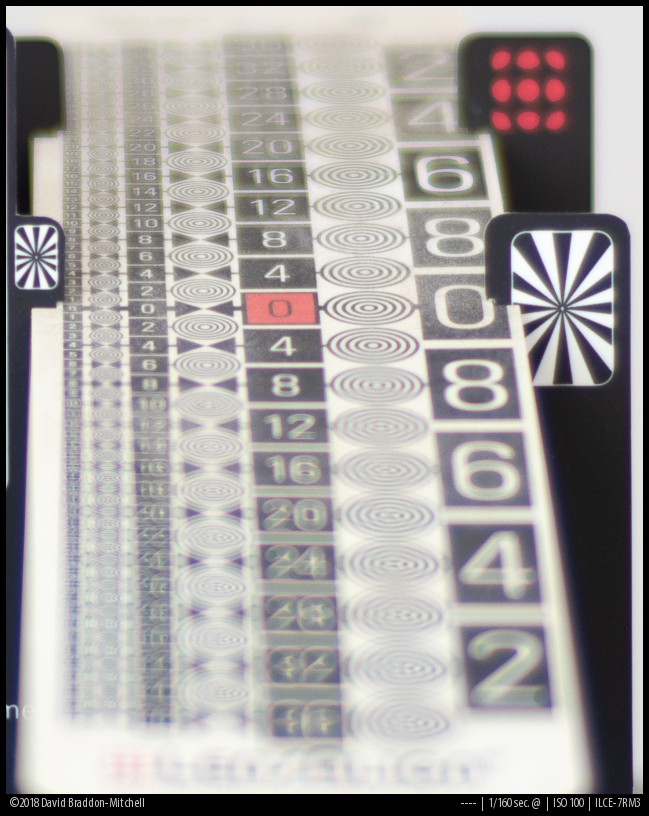
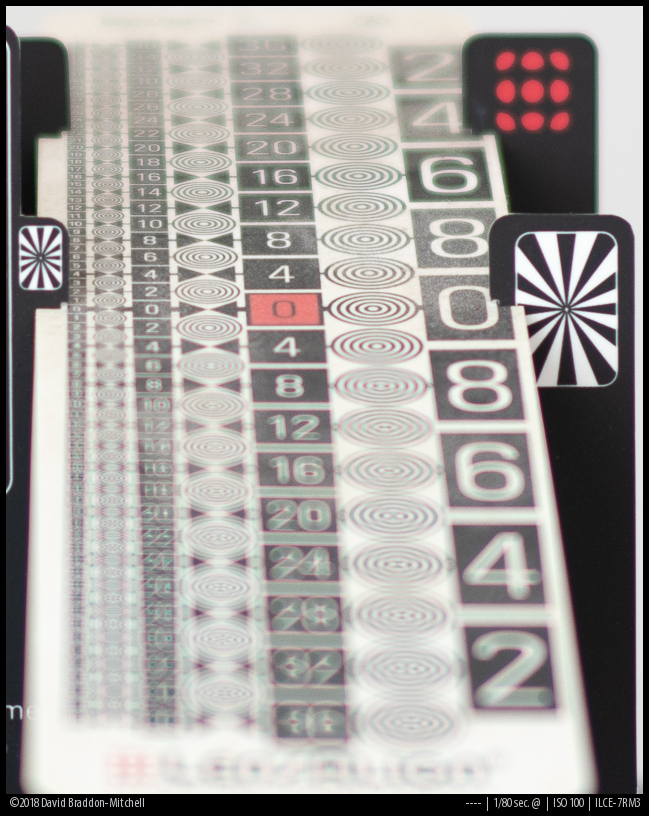
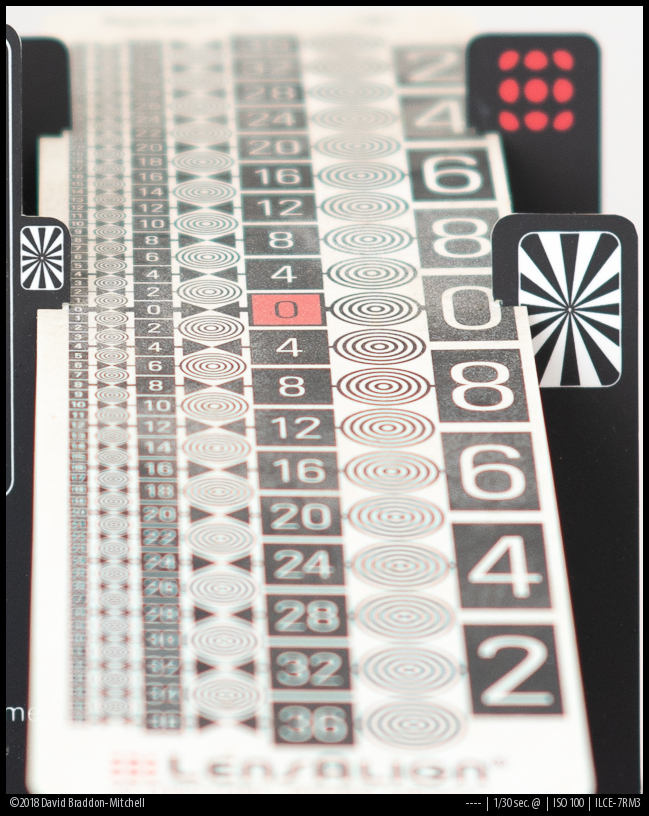
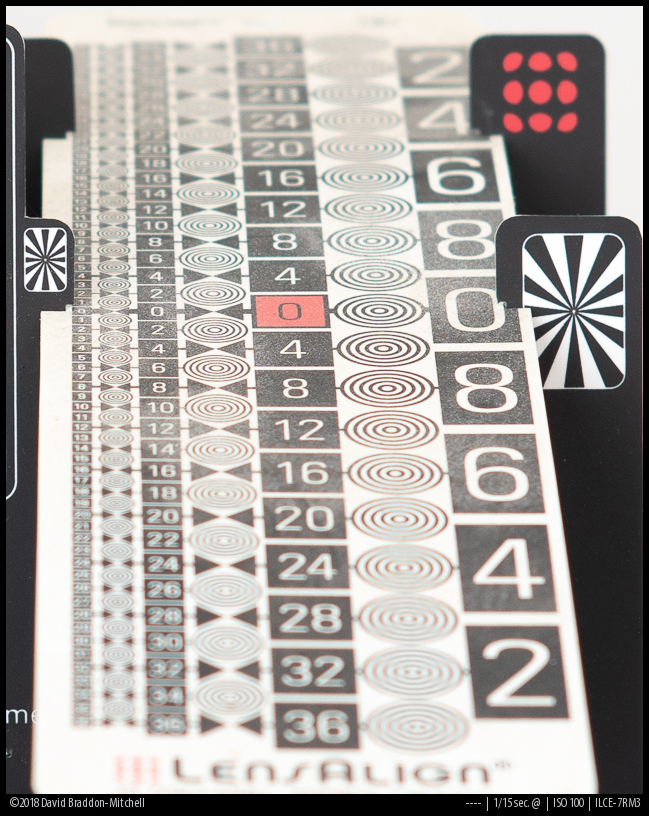




Interesting, this is the first time I’ve seen someone in the middle when it comes to this lens. It’s usually either absolutely love it or completely hate it. I am one that that is totally in love with it, but my shooting is mostly street and family/friends. And for those, I haven’t found a better lens yet.
The size plays a nearly equal part as the rendering. When it’s attached to my camera I pick up my camera every time I head out from home because at that size and weight, it really isn’t a burden. And living in New York and shooting street, I never get the nasty glances that I get with larger lenses.
But the biggest reason I love this lens is the feeling it evokes when I look back at old photographs of family and friends, especially candid shots. There’s something about the way it renders that takes me back to that point in time, a nostalgic twinge no other lens quite manages. A quote from Mad Men that works well for this lens – “It isn’t a spaceship, it’s a time machine”.
I sort of love it too; and I agree that it’s a time machine, and IMHO the best time machine you can get if it has to be made of glass! But I have to recognise that, with my reviewer hat on, that’s a matter of taste that not everyone will share, and people need to know about the absolute performance as well to make up their minds, and that it’s not a lens for everyone (and probably not the *only* 50mm lens for anyone who does a wide range of photography with their 50).
But you are right people do tend to polarise, especially with fairly expensive lenses. They only are in the middle for cheaper lenses, where it’s easy to say “not bad for the money”. But here we have a really quite expensive lens that in certain technical respects is behind cheaper glass. So people will say either it’s absolutely a steal, and has mysterious magic, or that it’s a rip off. And neither is true. It’s very beautiful for a certain nostalgia look, and the best option for that and worth buying (the handling is a big bonus if you like the look) for those who like that look. It is pointless for those who don’t.
Yup, completely agree with you and I think your review was a really fair one. And I rarely ever recommend it to others (despite raving about it which confuses people).
My all rounder pick would probably be the 55 1.8 ZA – The combination of size, resolution, flare resistance and bokeh make it for me(though the fringing does occasionally annoy me). I’m curious about your 50 pick though considering you’ve handled a lot more lenses than me.
You mean if I had to pick only one? Oh that’s hard.
Maybe the ZA55 even though it doesn’t excite me, but it’s such a good all rounder.
If I could have two it’s be the ZA 1,4/50 and the Loxia 2/50 (or the Leica APO summicron if I were richer). I need to be allowed to keep 3 to justify my C-Sonnar.
Hmm interesting, I’ve never used the 50 1.4 ZA (and likely never will considering the size) but I’ve used the Loxia for while. What does the Loxia give you that you need it in addition to the ZA?
Hi David… A couple of years ago when I bought a7ii, I ordered a few 50s- summilux, summicron, Loxia, mitakon, zm planar and zm sonnar. The two lenses I really liked were sonnar and mitakon. Each had something unique that no other lenses had. In the end I kept just the sonnar because of how light it is, easy to focus, the 3d pop and colours. I fell in love and I still have that lens though not a single camera body at the moment. 🙂 might get an a7iii or try xt3 for a change.
It is lovely, isn’t it? Don’t get a different body just for a change, though! For one thing this lens won’t perform well on APSC. But more importantly, changing bodies puts ones photography back years as you acclimatise to a new system and get automatic control (of your body!) working on the new system. So it should be done only for really compelling reasons!
Thanks David. Unfortunately I have been suffering from some right shoulder problem so find any (Sony) full frame mirrorless body with lenses uncomfortable. Just bought xt3 a couple of days ago. Plan to get a mitakon 35/0.95 and see how it goes. Sonnar stays safely tucked away until I can get a full frame.
Great lens review. Thank you for finding the time for it.
Great review, thanks. Off topic but thumbs up for getting a Schnauzer to sit still for photos… Mine seems to know whats up and always makes a run for it!
Yes they look like a bit like Schnauzers, but actually they are Labradoodles! Don’t know that that explains the patience. I think that’s down to dried salmon treats…
This lens has a slight modification on the original design which may improve its performance against a much older, similar lens.
Zeiss also make UV and polarizing filters with T* coatings (which are expensive for filters) however, it begs the question as to whether an old lens with a Zeiss filter can be a match for an expensive, old design, modern lens with T* coatings.
(1) Have a look at the early part of the review: I specifically mentioned that this lens has better coatings, and a design change (one group is separated) for somewhat improved performance compared with original Sonnars while preserving the look.
(2) The filters are irrelevant. Filters don’t improve things no matter how good the coatings. The best coatings on a filter *prevent or reduce the harmful effects on IQ of the filter* but don’t improve IQ. You use filters because you want protection (I usually do) or you want polararization, ND etc and are prepared to pay a (with the best coating very small) small price for it.
Can we expect the review of FE 50 1.4?
Good question. Both Jannik and I have it, and both of us like it very much. Neither of us has plans to review it in the near future though.
Judging from samples online ,7 artisans 50mm 1.1f have very similar bokeh rendition wide open.
Thanks, again, David, for an excellent and informative review (that also doubles as “lens historiography and education” for those of us who are relatively new to the camera world).
I wonder if you or your colleagues on phillipreeve.net will be sleuthing about for a 40mm Batis to examine in detail on our behalf?
PS: How can we, those who derive so much benefit from your wisdom, contribute funds to help cover the costs of this website?
Thanks, Victor, for your kind comments.
I think there is some chance one of us will be getting a Batis 40 to review. It depends on whether any of us decided to buy one, or if we can get a no strings attached review sample from Zeiss.
As for contributions, this is a labor of love, not any of our day jobs, so we don’t have any advertising (and I think it really would affect us psychologically to have advertisements). We do have affiliate links, so if you decide to buy anything we review or mention as an alternative, buying it from B&H, Amazon or Ebay via us costs you no more, and sends a few pennies to help us keep the site up.
Thank you for the very informative and useful review.
I’ve read elsewhere about the difficulty of adapting Lecia lenses to Sony A7 bodies because of the filter stack issue. Given that Zeiss built this lens with the Leica mount, I assume that it was designed for Leica use. Yet here you are, using it wonderfully on a Sony A7 body. Can you explain why in this case there is no problem?
Hi Marie!
I expect there is a slight problem: the field curvature I showed would, I suspect, be a little less on a native Leica sensor cover glass. Usually by 50 mm this is not a big deal (and irrelevant generally at longer lengths) though it can be quite a big deal for wide angle lenses. This lens has a fairly extreme ray angle for a 50mm lens, so it probably does suffer a little more on Sony than most 50s, but I can’t be sure. In any case, most people who buy this lens are using it for people photography where you focus on one specific point (generally an eye) so a slight increase in field curvature is not tall that critical.
Thank you – makes perfect sense.
One more question, if I may: no one on this site ever talks about “micro contrast”. Some people claim it is the “secret sauce” in great, old-fashioned lenses. Other say it doesn’t exist. Have you got an opinion about this?
Ah, the dreaded micro contrast.
The problem is that while I’m sure many people are talking about *something*, they are almost certainly not talking about the same thing.
The term was introduced, I *think*, by Zeiss engineers to talk about the contrast of very small (micro) features: in other words high frequency MTF (e.g. MTF40). High frequency MTF is the amount of contrast between pairs of lines that are very small and very close together.
This, is, of course, a way of measuring resolution of small details. And MTF 40 is much, much, better in modern designs than great old fashioned lenses.
If I wanted to insist on what ‘micro contrast’ means, that’s what I’d say.
But it clearly isn’t what some people are talking about, because they say things like “while the lens is not very sharp, it has great micro contrast” which is impossible on a strict definition.
So sometimes I think they are talking, ironically, not about micro contrast in this strict sense, but rather about overall contrast – macro contrast. The thing perhaps measured by MTF10. This is contrast between large-spaced line pairs, and since it applies to big structures, can be seen in web sized images and smaller prints, and indeed is what matters for small prints or images viewed on screen without pixel peeping (though you won’t find lenses with high MTF 40 without high MTF10). It’s possible, on the other hand, for lenses that aren’t super sharp (MTF40) to have high overall contrast: its down to careful reduction of reflections and glare by lens design and coatings, basically keeping non image-forming light off the sensor. This certainly adds “pop” and colour saturation to an image.
At other times, and pretty often, it’s just used as a catch all term for features of lenses rendering or look which someone likes.
So you can see why we don’t talk about it much. If we used it “correctly” we wouldn’t be talking about what most people are talking about. But there’s no one thing we could talk about which would engage with all the talk about microcontrast.
Such a good explanation I feel I should apologize for bringing the subject up…
Hoping for a 50mm 1.4 FE Zeiss review:) I’ve considered picking it up, but having it along with the 65mm seems excessive. Well, at least that’s what I keep telling myself…haha.
Maybe we’ll review it; but in the mean time I can say that its only real drawback is size and weight: 765g.
But then that is as light as we will ever get a top quality autofocus 1.4/50 I think; considerably lighter than the new Canon f1.2, and lighter than the Sigma art. You can get a smaller one by making compromises of course.
But if you want a 1.4/50 with very high contrast, with good sharpness over a wide range of the field wide open, not bad CA and no onion rings, and really very well controlled bokeh you can’t go wrong with this.
It’s really down to whether you want the extra speed, and whether you want AF and whether you want both those things in one package.
Hi there, been anticipating this review since you mentioned this lens a while ago, can you explain more on how to setup the achromat dioptre for this? Am very interested as seeing the results, its huge! Thank you for your time, David
just checked the prices for these SLR Magic diopters, seems like there’s no way of getting the +1.33 only. There is also the option for a +1.8, which is cheaper, would this work just as good or better, or is the +1.33 optimal?
Hi Edwin. It’s just a matter of what distance you want to focus at.
In theory for positive diopter lenses, if you attach them to a lens set at infinity, you can focus as 1/diopter metres.
So a +1.33 diopter achromat will focus at about 1/1.33 = .75 metres, which is similar to the MFD of this lens (in fact I found it focusses a bit further away but not much). You can get a bit closer, though not massively closer, but focussing the lens closer.
So a +1.8 diopter achromat will focus at 1/1.8 = .55 metres. This is close to a typical MFD for SLR lenses, and if you want to focus at that distance with better quality than using an extension tube or helicoid, it’s what you want. But there aren’t many kinds of portraits you can make at such a close distance, although occasionally it works in a distorted arty kind of way. Only you know if you want to focus at .55 metres (or a bit closer) but I think probably it’s not the most useful achromat for this lens.
It’s hard to find *weak enough* achromats for this kind of use (fooling a lens into focusing at normal close distances while set to long ones). Aside from the SLR magic there is a Minolta No 0 that is about 1 diopter (and so will allow focus at 1 metre) which you might find online (though from using it briefly I am not sure how good it is…not a firm conclusion though) , and there is the Leica Elpro 4 which I +.75 diopter, and so allows focus at about 1.3 metres, and is quite handy with this lens, as the 1.3 metre distance is still not optimal, though better than MFD.
Just screw on the achromat to the front of the lens with a step up ring (lens filter thread > the thread of the achromat)
The tricky thing is that once you have done this, you are limited to focusing at the distance determined by the strength of the achromat you choose if the lens is set to infinity (you can get a bit closer by focussing the lens closer, but not much, but you cannot focus further).
That distance is 1/(diopter of achromat) in metres.
The problem is finding weak enough achromats; most achromats start at 2 diopter which allows focus only at 50cm or a bit closer. To get close portrait distances you need somewhere between .75 and 1.3 diopter. SLR magic make a .33 diopter one, but that focuses at 3 metres, and the lens is pretty good by then so there is not need for it. I might add, the SLR magic achromats are very big and heavy. If 1.3 metres is fine for your purposes, the .75 diopter Leica ELPRO 4 is much more manageable.
Thank you for taking the time for a great explanation, David! I’ve stumbled upon an ELPRO 4 for 10 quid somehow, and should be arriving fairly soon, will update if i see great results from it!
Look forward to hearing your results! I haven’t formally tested at 1.3 meres, so I don’t know for sure whether the lens has improved enough by then that the achromat doesn’t help much, but my guess is there will be benefits!
Thank you for your work. I use a Summilux pre asph and it is rendering is like the Sonnar, may be a little smoother. Both have this spezial plasticity if you make a Porträt centered in the middle of the frame. Using a achromat i will try. Normally i use the Voigtländer vm-e adapter.
Interesting. My sense from using the summilux pre ash only briefly was that it is similar wide open, but the Sonnar is smoother at f2 to f4 before they start rendering the same. But it’s is true that the pre ASPH summilux is a kind of Sonnar design.
Anyway, regardless of that, the design similarities make me think it’s well worth experimenting with achromats. I’d suggest two; one that allows focus at current MFD but with better quality, and a stronger one to allow focus closer than MFD with better quality than using physical extension (like in the VME)
Thanks David, this was a pleasant review. As others have said, it’s nice seeing a “balanced” review, where so many are extreme on this one way or another.
Then again, that’s why this place is in my favorites!
I was mulling this lens over based on the size alone, and my affinity for nifty fifties. I think your review cemented it for me that it’ll be a purchase I make after a few other lenses that will likely get more use.
Basically, it’s distinct enough I still want it, but is “meh” enough with sharpness that I’m not going to rush and buy it today.
Thank you!
That’s fair enough, though for the things it does distinctively well, the sharpness is fine. You only get into trouble with that if you use it for things that it’s not really designed for.
I’m not familiar with the concept of non image forming light and admit I am a rank novice in photography. Is there a better description and how modern lenses are designed to adapt to it?
Non image forming light is just any light falling on the sensor which is not an intended part of the sensor; think of glare and reflections and so on. Diffuse light falling over the sensor gives lowered overall contrast; concentrated light gives flare artefacts.
I don’t have a link but if you go to the Zeiss site they have somewhere a description of how powerful computers help in modern lenses. But I can say a thing or two. Clasically, you compute a lens by calculating the treajectory of light rays coming from the subject, being refracted by the lens elements and striking the sensor. Recently, with computer design, many more rays have been able to be economically calulated going through more elements.
But this all ignores light that might be reflected back off the sensor, or back off elements on to previous elements and so on. This is non image-forming light. The latest design software calculates these rays too: so it tells you what kind of glare or flare you can expect as you reconfigure the elements, add baffles, or whatever, and enables the flare control and contrast maximising to be a direct design goal, rather than just designing for minimum aberration and then putting on the best coating you can afford, and putting in some baffles and paint on places which seem intuitively right.
Best Zeiss lens I have shot on my a7r2, is the Zeiss 50 f1.8 Ultron concave. Magic piece of glass. I like it better than the sonnar and t* 1.7 planar. I haven’t shot the new native Zeiss 50s but to me the they are a bit too sterile frombehat I have seen
Never used one of these; they are pretty expensive! By all accounts, much sharper wide open than most classic 1.8/50ish glass, and that no doubt helps with the contrast between plane of focus and bokeh.
Interesting review of a lens I won’t buy ?. One remark: this review is not included in the overview of Zeiss lenses
https://phillipreeve.net/blog/lenses/zeiss-cy-lenses/
thanks for the hint, fixed it.
Not so sure anymore about not buying this lens, I just like Zeiss lenses on my Sony A7R2 and this one looks special enough, although there are enough downsides to it.
Any chance of viewing the image samples somewhere in full resolution? Can’t find too much online. If so, thanks in advance, and otherwise thanks for another good review!
Another old (far cheaper) lens that delivers smooth bokeh for portraits at a fraction of the price is the Takumar SMC 50mm 1.4. It may be a bit more versatile as well.
It’s a nice lens, but being a double gauss (aka Planar) design, has a very different look from a classic Sonnar.
thanks for your review and details
Hello , Phillip
Your review is very appealing to me. However, there is one thing I want to ask you: I can use this lens well on my Canon 1DX Mark II ?!
We hope to receive your advice soon
Best regards
No, you can not.
Very fair and detailed review, I am hovering over buying one, but note the comment about it not performing well on APSC – can you expand on that. I intend to use it on a CL
Thanks